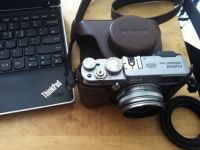-
Start
-
Bears Town
-
Sansawon
-
Pocheon Dongjanggun Festival
-
Pocheon HanwooMaeul
-
Pocheon Art Valley
-
Hotel Nine
-
Harbor Coffee
-
Dasan Historic Site
-
Finish
Harbor Coffee
The south area of Namyangju, which is a border between Yangpyeong and Pocheon, is where Bukhan River from Gangwon-do and Namhan River crossing through Chungcheon-do join Han River that crosses through Seoul.

So there are amazing sceneries made by rivers here. In summer, this place becomes heaven for water sports or just for a drive near Seoul.
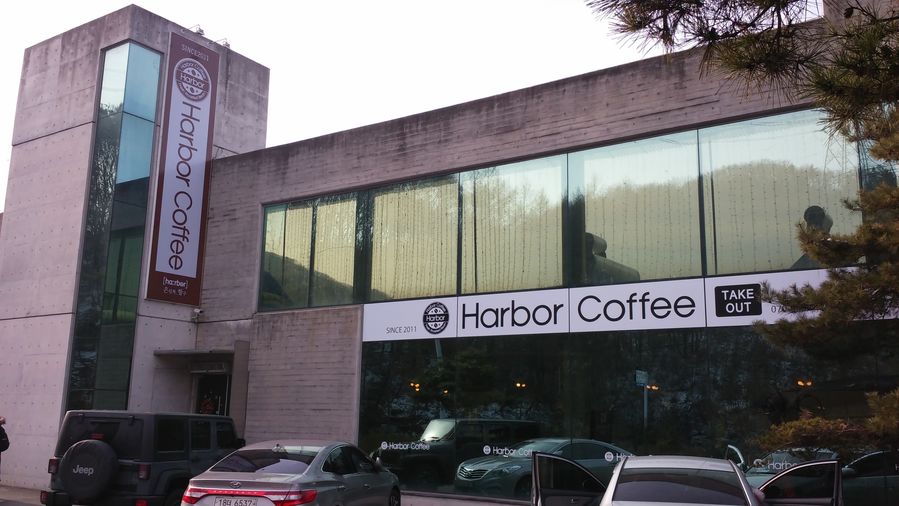
So a cup of tea watching Han River cannot be missed here. So out of busy schedule, we headed to Harbor Coffee, coffee shop near Bukhan River.

This is located in Yangpyeong-gun across the river in Namyangju and it’s not so famous but it has an advantage that it has windows instead of walls facing Bukhan River.
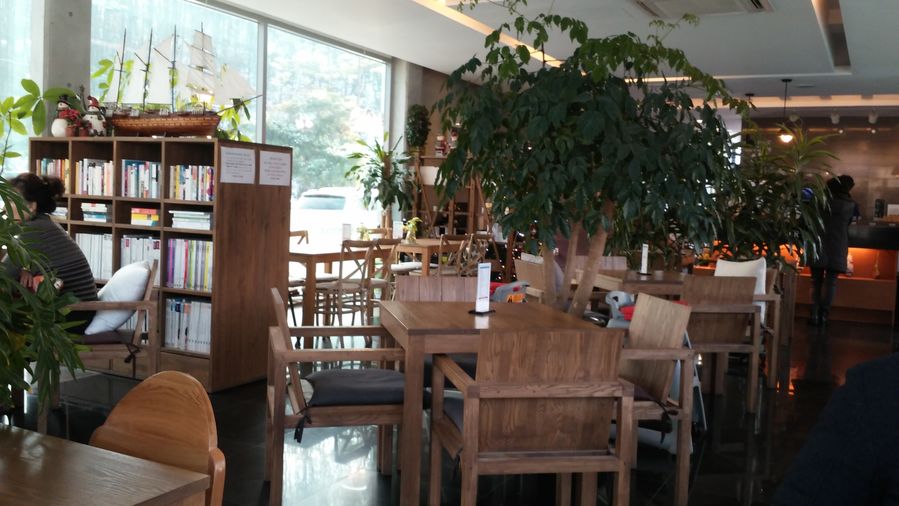
The wooden tables and chairs are widely distributed in the building so the customers could look at the river in all seats. But for a better view, we sat by the window.
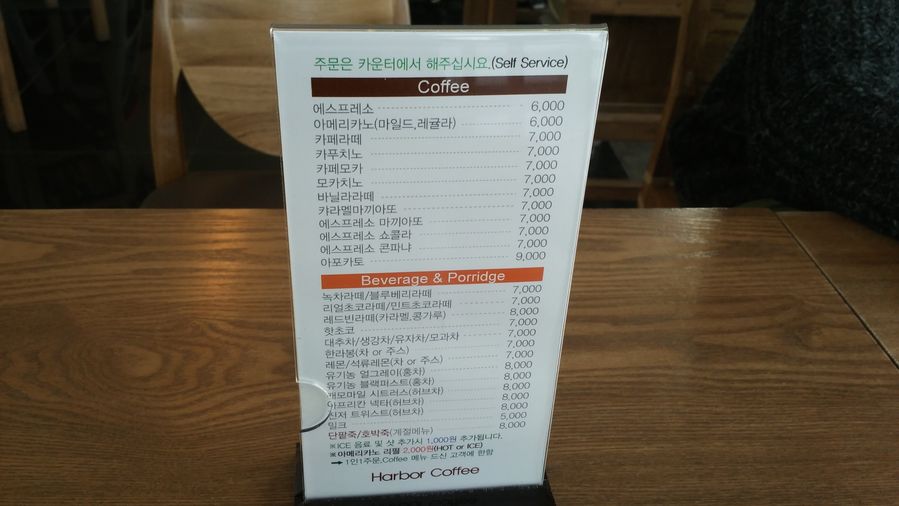
The menu on the small table says it’s self-service. But still the prices were quite high considering one americano costs 6,000 won. Guess it’s indeed a tourist attraction that charges us the price for seats as well.

Well, considering the advantage that we could talk while we watch Bukhan River and avoid cold wind outside, it’s worth it I guess. Especially, this is like heaven for people who travel using public transportation like us.

We got the coffee we ordered. Not much of a difference compared to coffees from regular take-out coffee shop. It’s still lunch time but we didn’t have meal so it’s morning coffee for us.

Sadly the scent of coffee was not so strong. I wanted something a little bit stronger than soft mild coffee but it didn’t satisfy my standards.
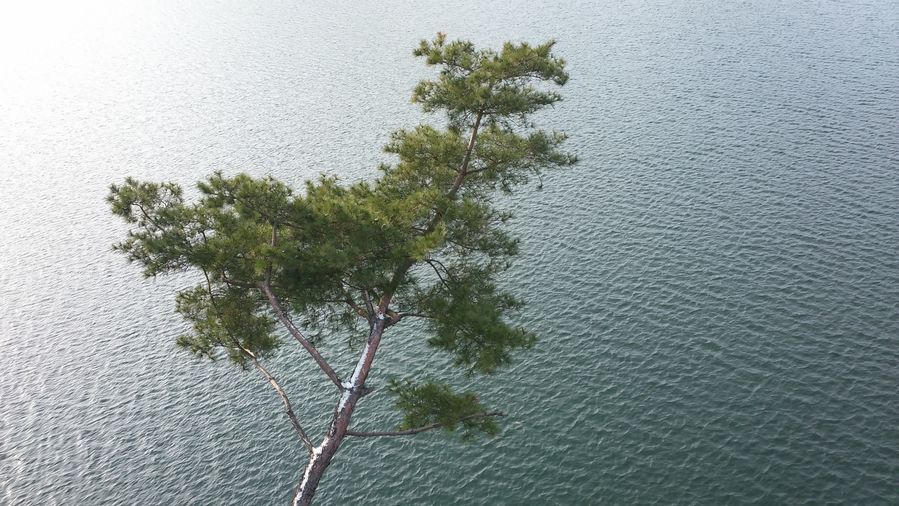
However, a sip of coffee I took while I was watching the waves of Bukhan River under the cliff right below the glass wall of the coffee shop was not just coffee, I was drinking amazing atmosphere. Plus, we could enjoy our photos we took for the last two days.
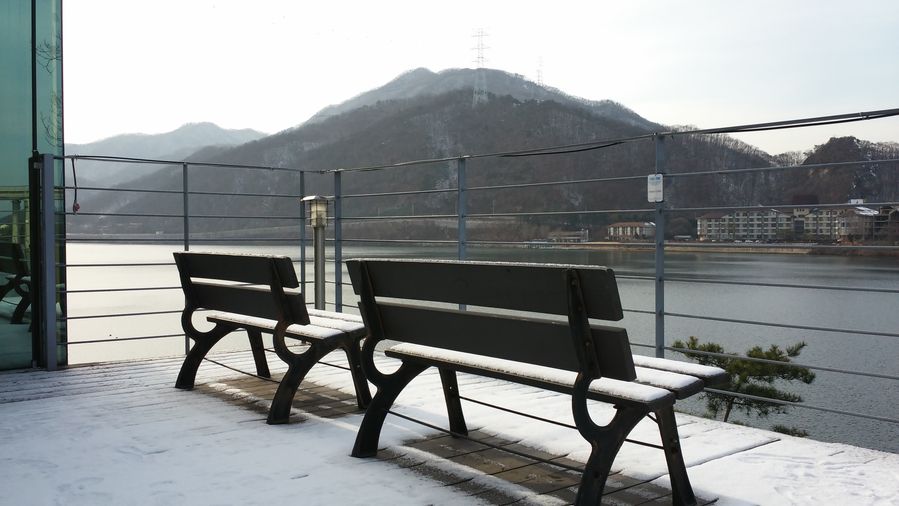
Harbor Coffee shop, located under Seojong Bridge on Express way that connects Seoul and Chuncheon, is right across Piano Falls, the attraction of Namyangju, and Namyangju Studios so you would better drop by your destination rather than make it your destination so that you can enjoy a cup of coffee and relax watching the cold waves.
Map : link
Address : 593-2, Munho-ri, Seojong-myeon, Yangpyeong-gun, Gyeonggi-do
Telephone : 070-4402-2060
Prices : Americano 6,000 won / Caffe Latte, Cappuccino 4,500 won / Affogato 9,000 won / Green Tea Latte, Cocoa 7,000 won.
Namyangju Studio Complex
Recently subway stations have been built that connect the Metropolitan city to most areas in Gyeonggi-do, Chuncheon in Gangwon-do, Namyangju and even to Yangpyeong. However, there are still station names that you’re not familiar with.
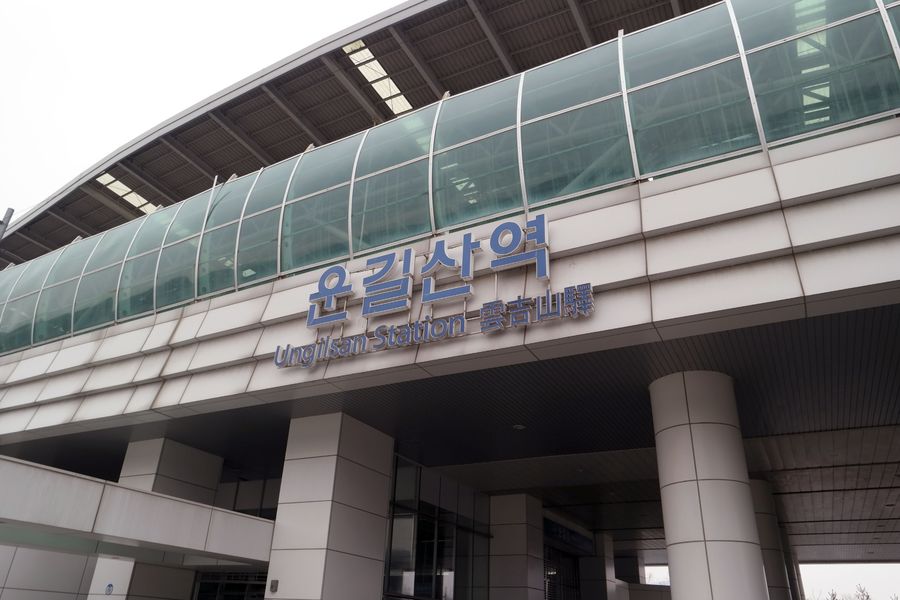
The station we got to is called Ungilsan Station, which we haven’t heard of much as well. The reason we came here is because we wanted to visit Namyangju Studio Complex, the most representative place in Namyangju.
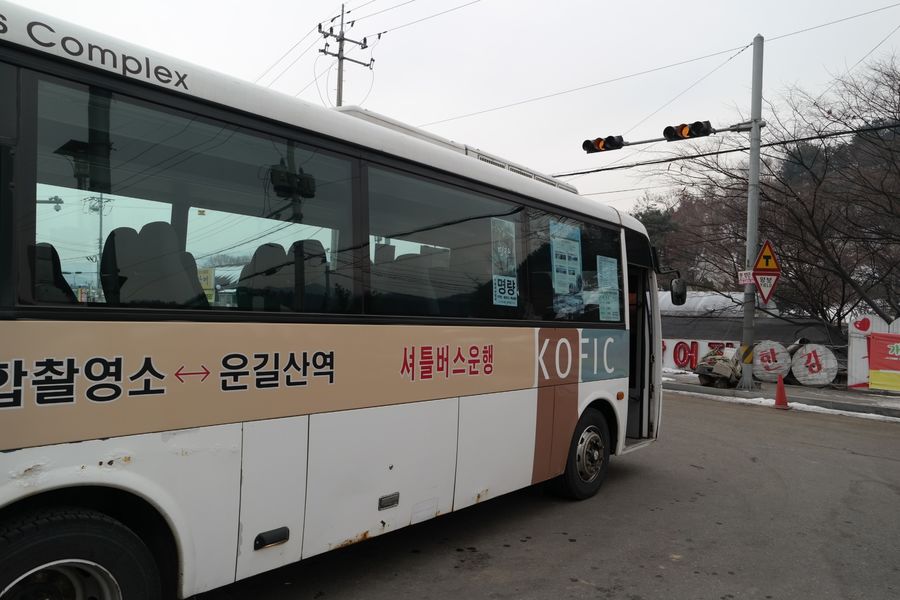
It’s located in a place where there’s not much of public transportation so the easiest way to get there is to take the shuttle bus at the parking lot in front of Ungilsan Station, one of Gyeongui-Jungang Line stations.
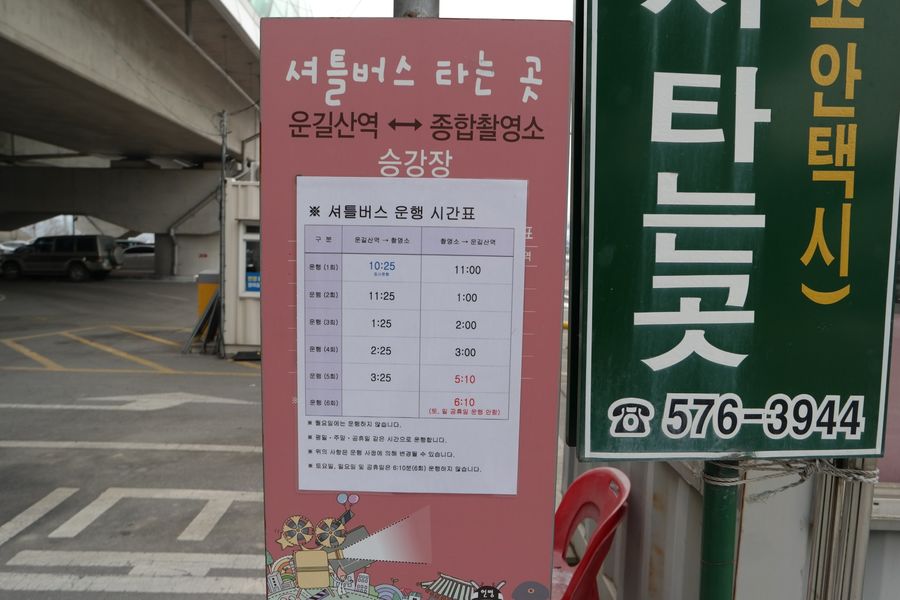
Unfortunately, there are 4-5 buses a day here and the time changes frequently depending on season so you’d better check on website in advance.
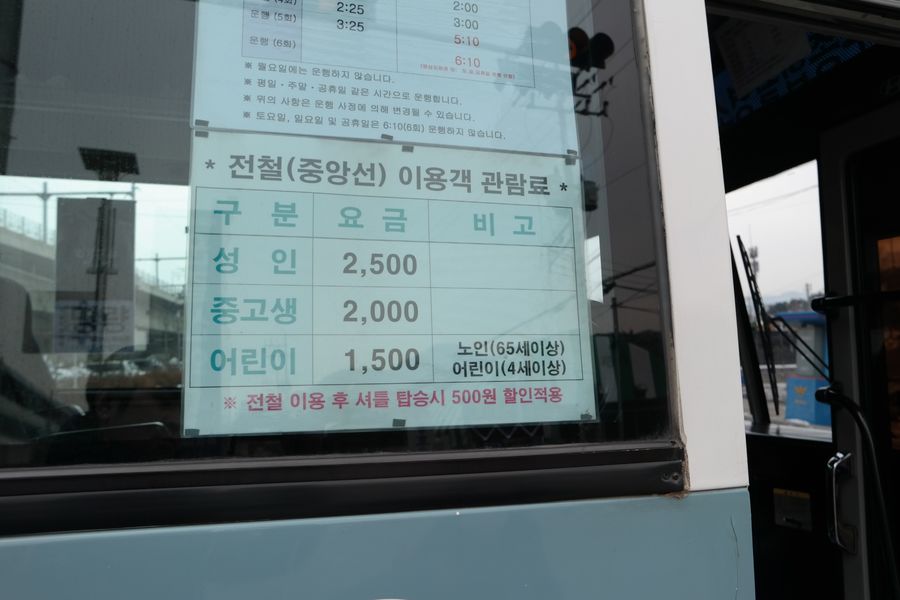
Shuttle bus is available for free and still, they could give you 500 won discount when you use the bus. So if you make it on time for the bus, you’ll save some money.
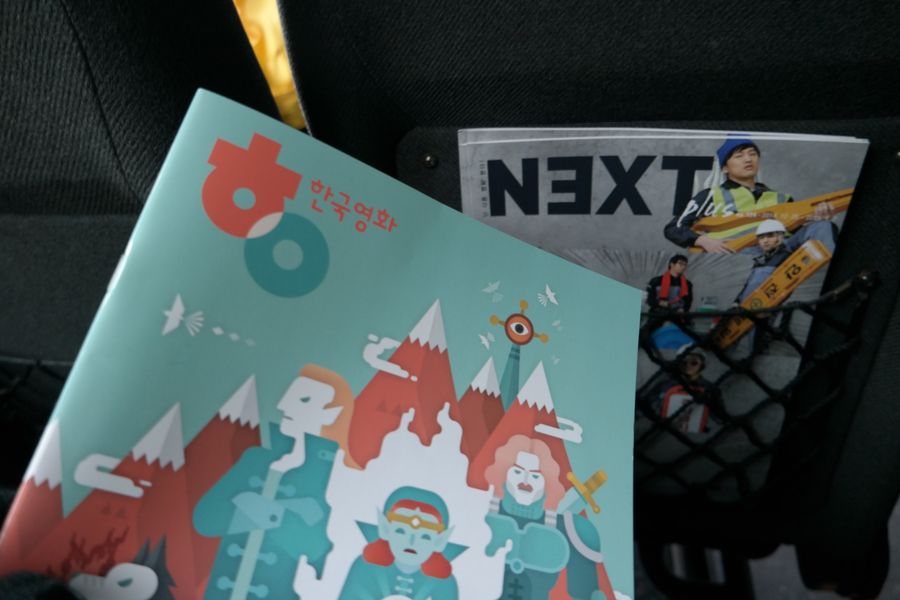
Shuttle bus looks old but clean inside. Plus the driver is so nice. It’s only ten minute distance but we shared stories and he told me where to look around.
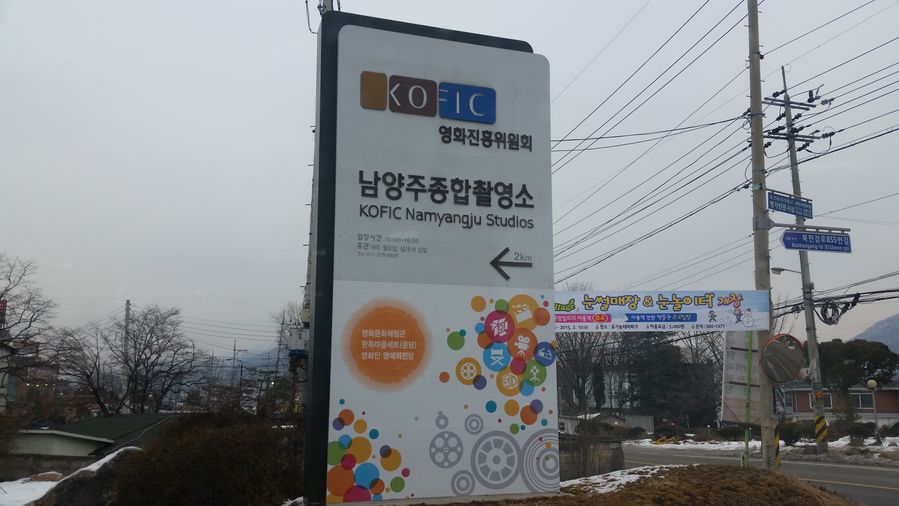
After a little bit of talk we got there. The entrance to Namyangju Studio Complex. There’s still a long way up to the valley. If you came here by public transportation, not by shuttle bus, you’d have to climb up from here. So you have to take this shuttle bus or bring your own car.
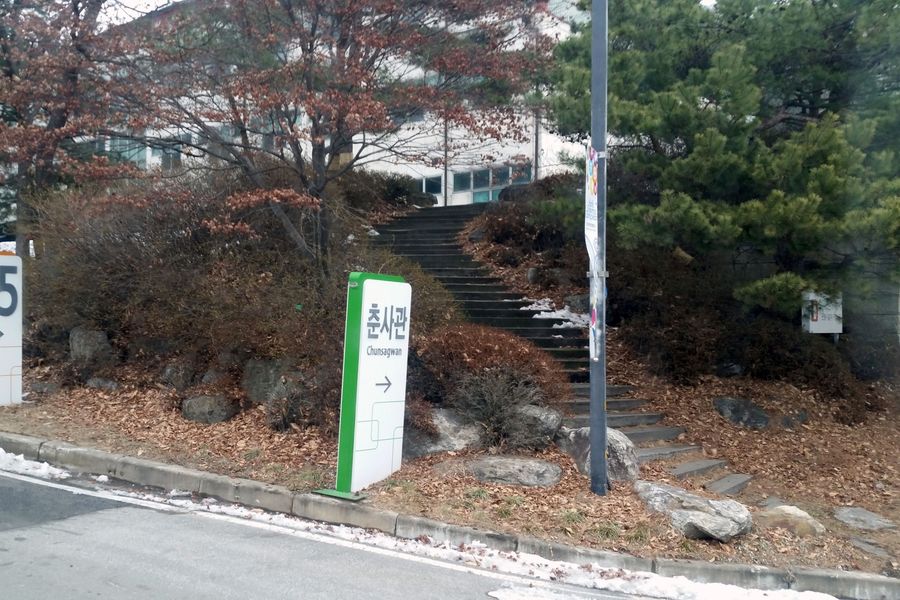
Big buildings are starting to appear in the mountain as we were going up. But the buildings in the lower part of the mountain are for movie projects including shooting or editing not for open to visitors.

Finally a big empty lot and a parking lot appeared and we could see Hanok Village covered with snow, subways and other film studios. We must be in the right place.
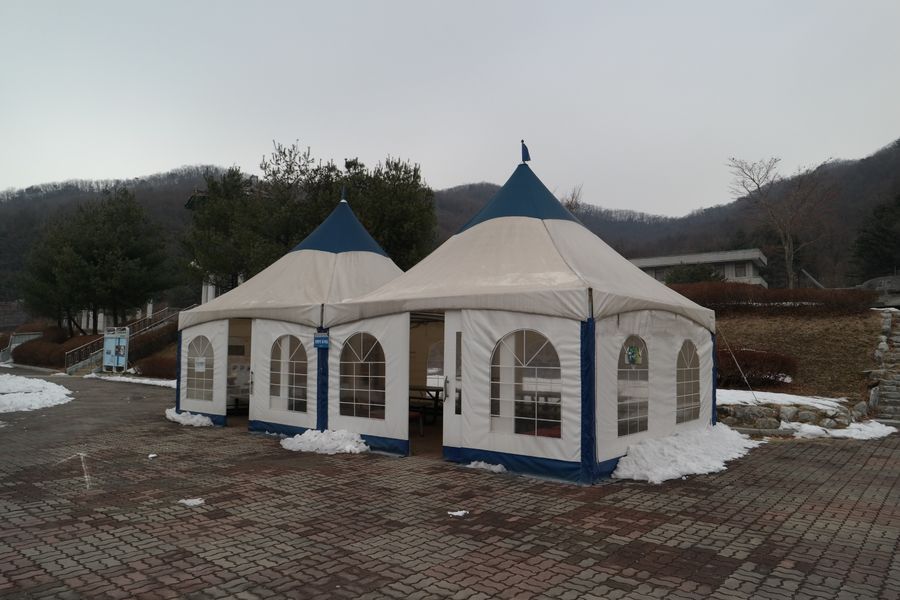
As the bus stopped, we said goodbye to the bus driver and bought tickets at the office in front of small resting area. It costs 2,500 won per one person.
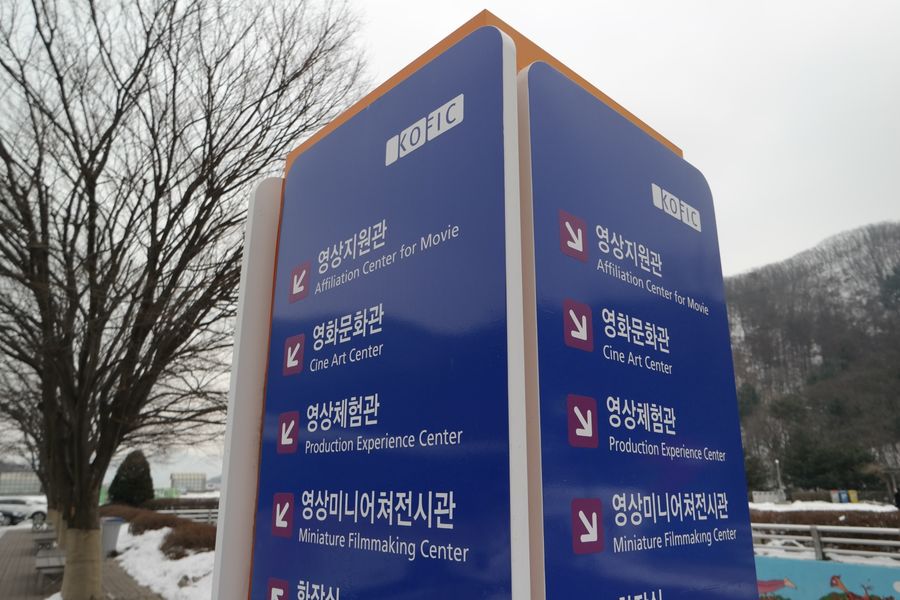
We paniced a bit holding tickets in hands…That place is soooooo big that we couldn’t decide where to look first.
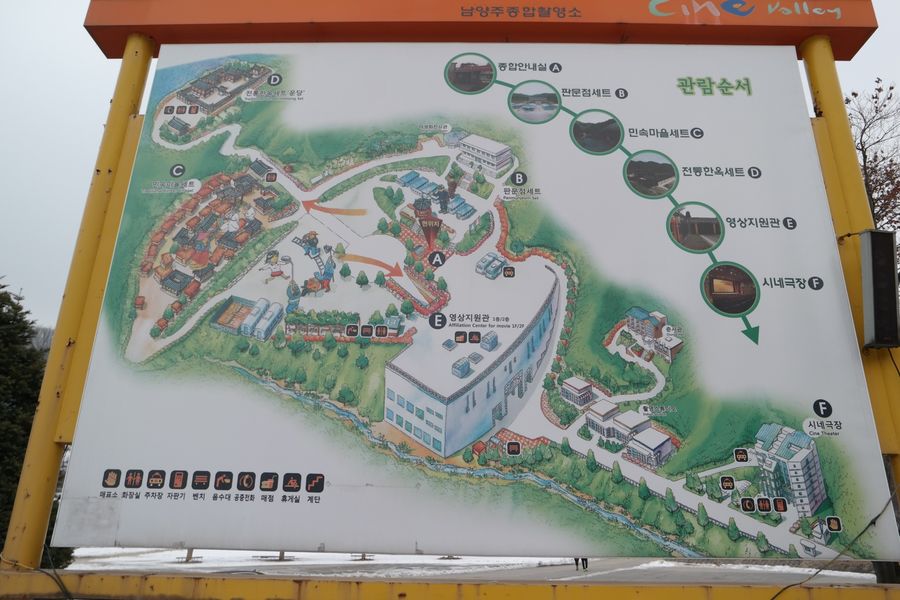
What we need is a map right now. Looking at the map in front of the ticket office, we decided to take a look backwards from the innermost place so it would be D-C-B-E in order.
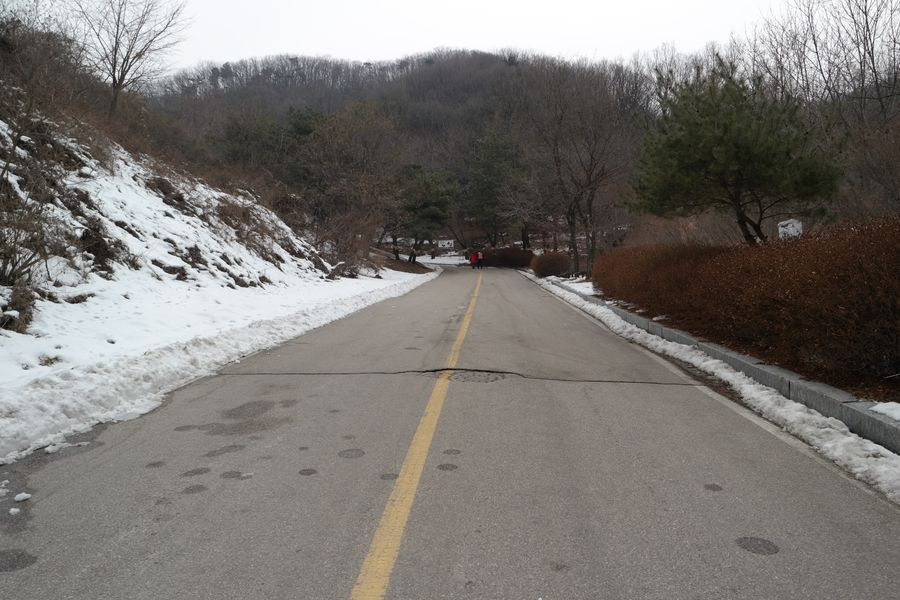
Because as you can see in the picture, Traditional Hanok Studio of D is located quite high. Plus this place is 400,000 pyeong (app. 1.3 million square meters) big so we’d have to plan and move accordingly to minimize the distance.
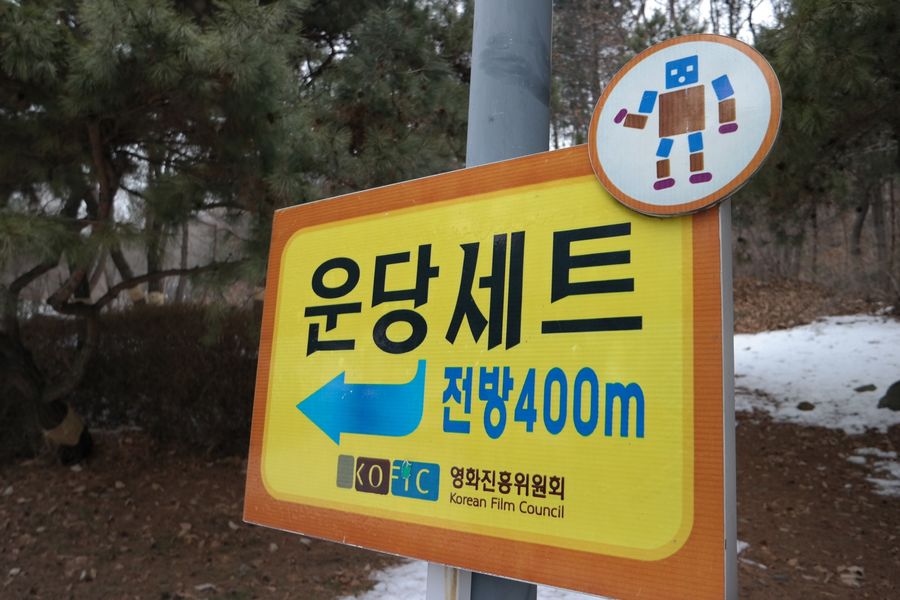
Oh, my… We found out Undang filming site, traditional Hanok studio, is quite far away from other studios. We had to go upto the winding hill to see it.
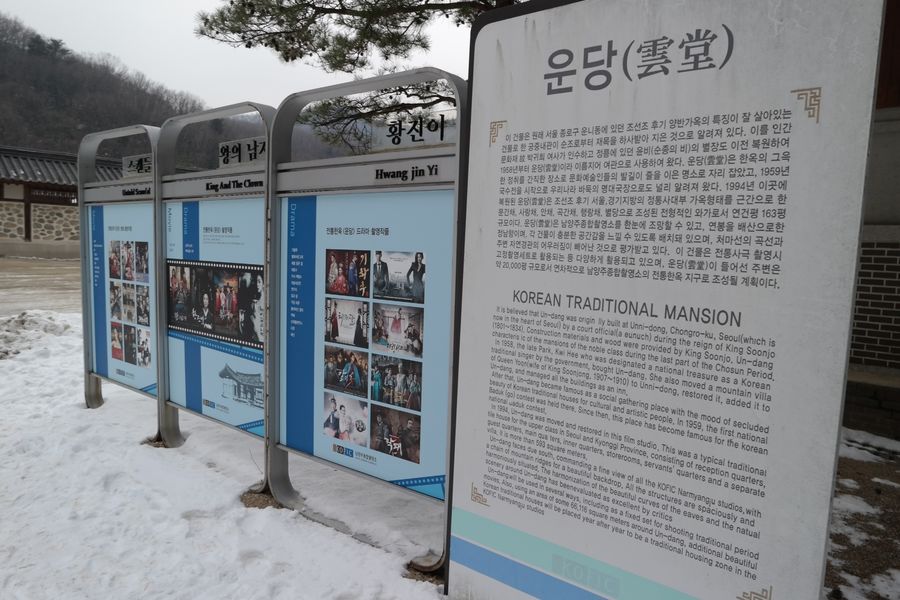
This Undang studio is a Yangbang Village full of tile-roofed houses that were used to show the men of power in the dramas or movies titled [Scandal], [The King And The Crown] and [Hwang Jin Yi].
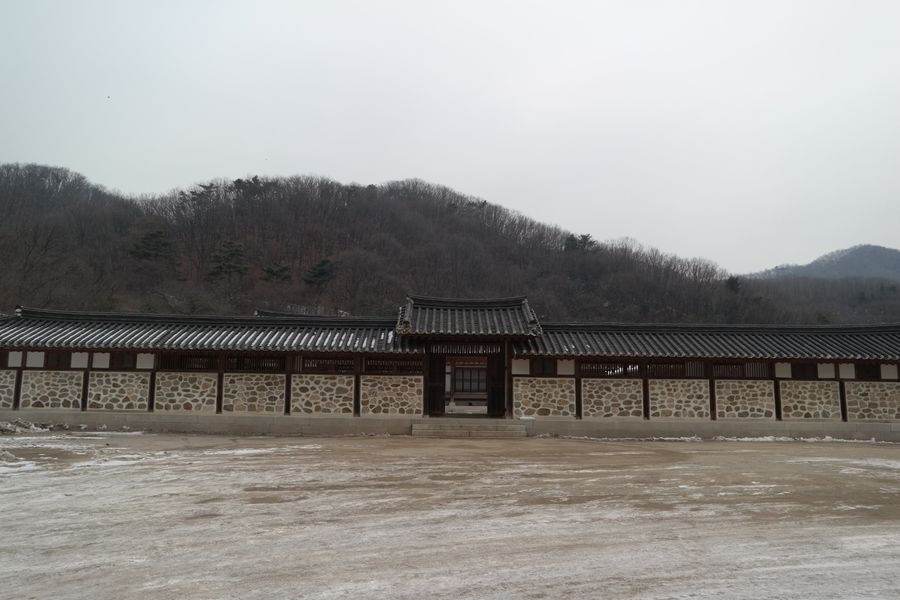
I can’t say it looks like a palace but isn’t it amazing for a gate to a studio? Plus the modern buildings or objects are not visible around this area that made us feel like we’re traveling the past in a time machine.
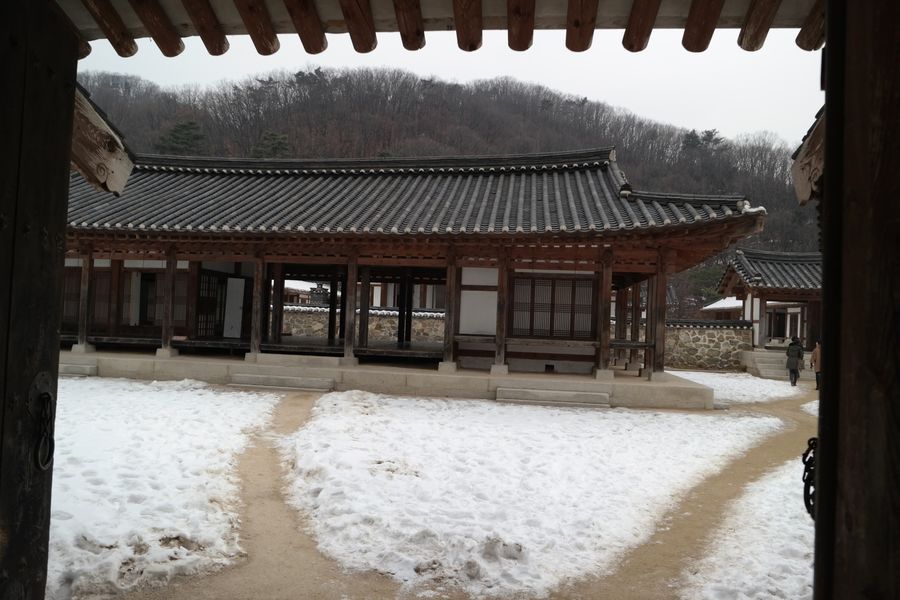
As we looked over the walls of the studio, there were ochre paths connected along the buildings with snow on both sides of the paths in quite big yards. A bit messy yards somehow made me feel like they’re real.
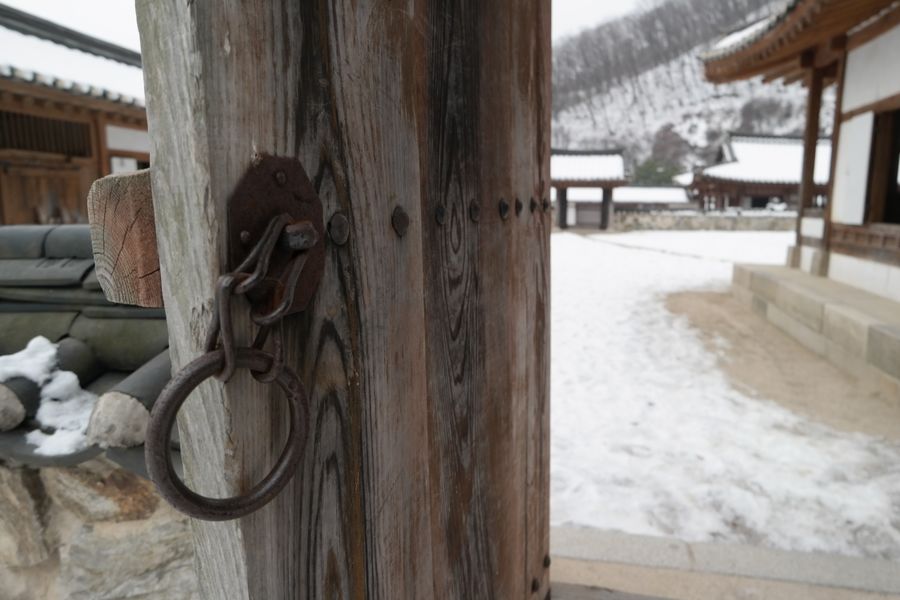
You could see that these buildings were delicately built by the look of small knob on the door.
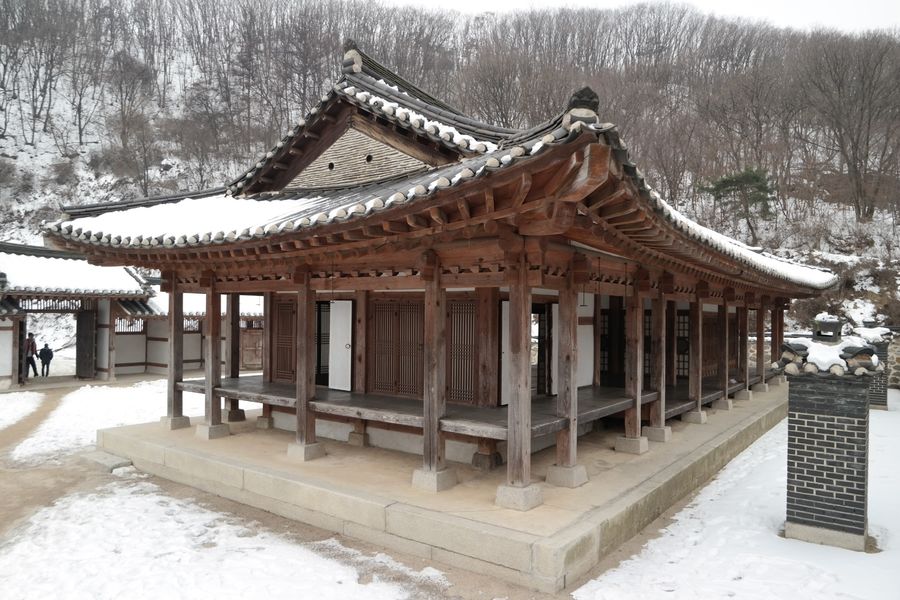
The first building we saw is the biggest and most glamorous building in this studio. Assuming from its size, it would be used as a building where the royal family stay.
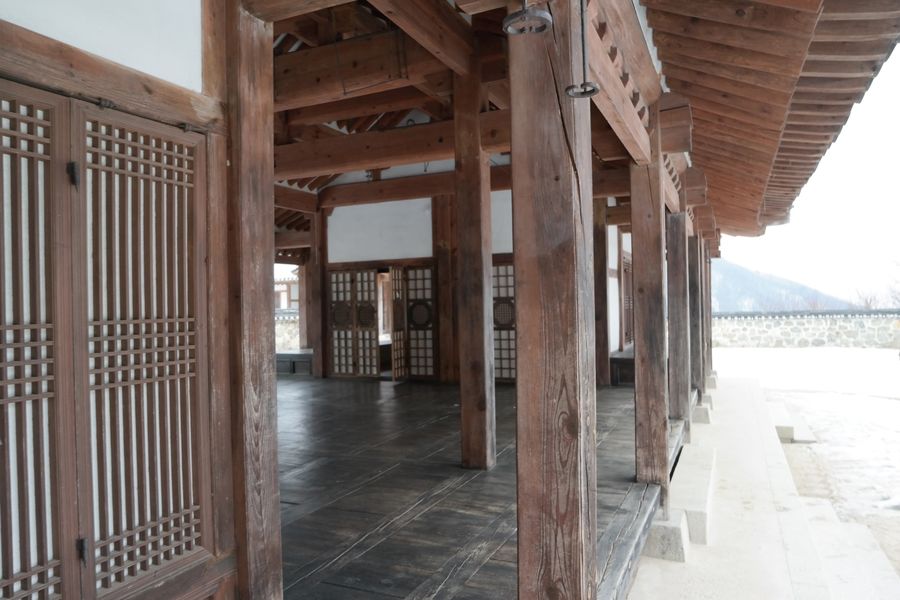
The patterns on the stylobates, chimneys, pillars or doors are almost same as the ones on outbuildings of Gyeongbokgung Palace.
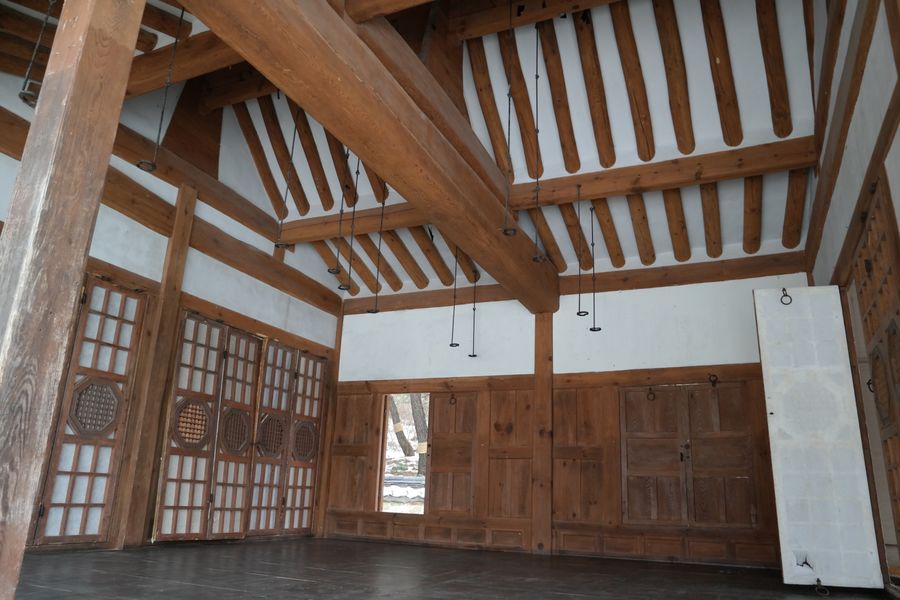
In the centre, there are shiny floors. It’s so cool that you won’t even need an air conditioner for a nap in summer but unfortunately it’s crazy cold winter now. Plus, the ceiling is so high that I was cold even by standing there.
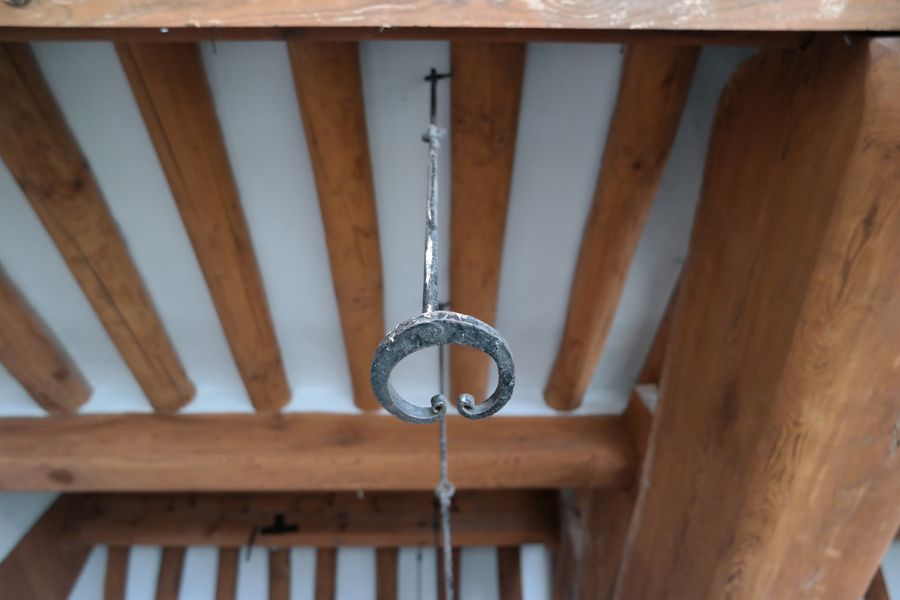
If you take a closer look, there’s a steel pillar that is connected from the floor to the ceiling that is twice as high as a human. This is a ceiling-type doorknob that you can roll up the door and hang it there, which shows you the intelligence of our ancestors.
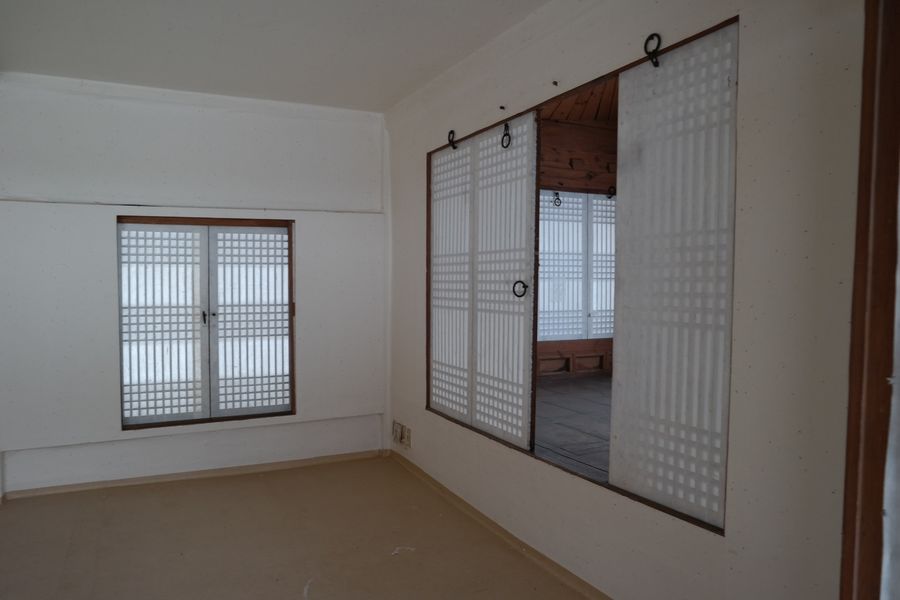
So as you can see, the hinged doors between the door and the main floor have doorknobs on the upper part to open them up and close them down.
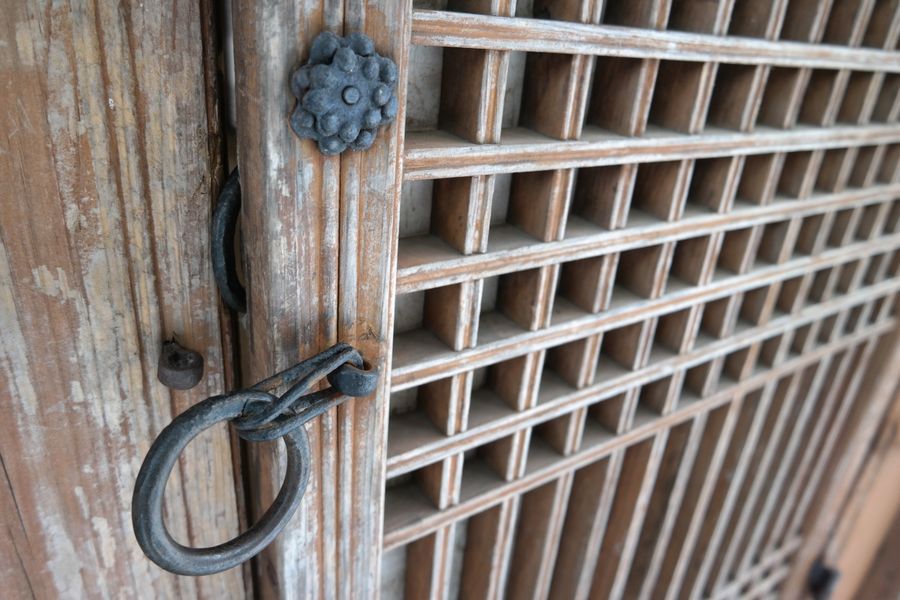
So when it’s closed, it becomes a warm house that protects owners from cold weather and when it’s open, it becomes a cool pavilion.
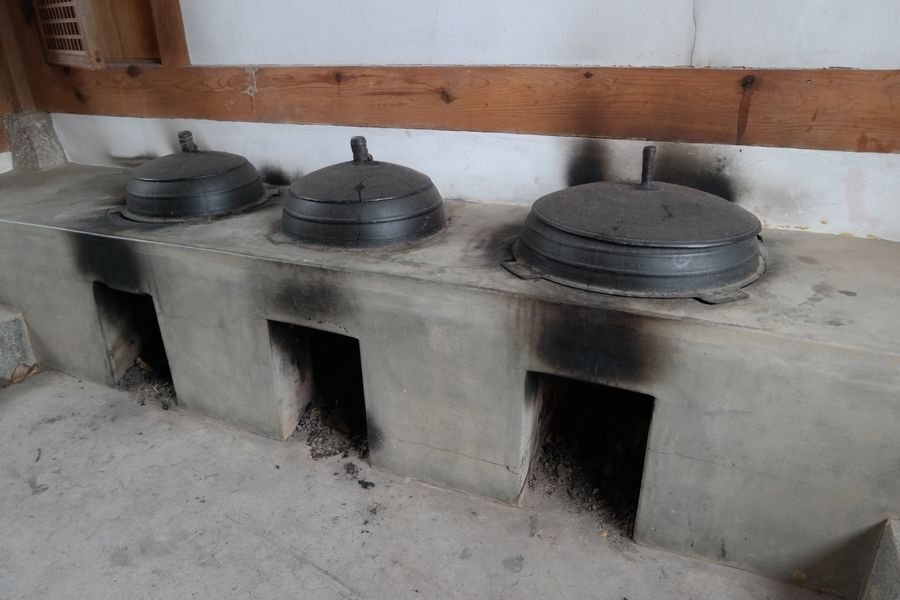
This studio complex was made for shooting but I guess it still is a house where people can actually live in. Of course these must be from shooting dramas or movies but there are iron pots in the kitchen and the traces of fire in the furnace.
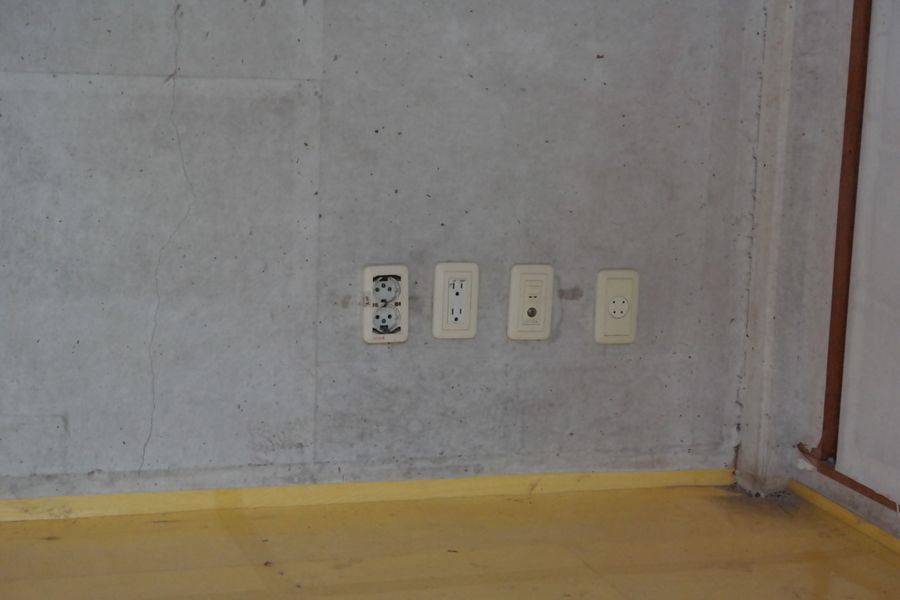
And on the wall of the room, there are electric cords, telephone cords, and TV cords that our ancestors used (?) hundreds of years ago. They’re temporarily prepared for the shooting right? ^^;
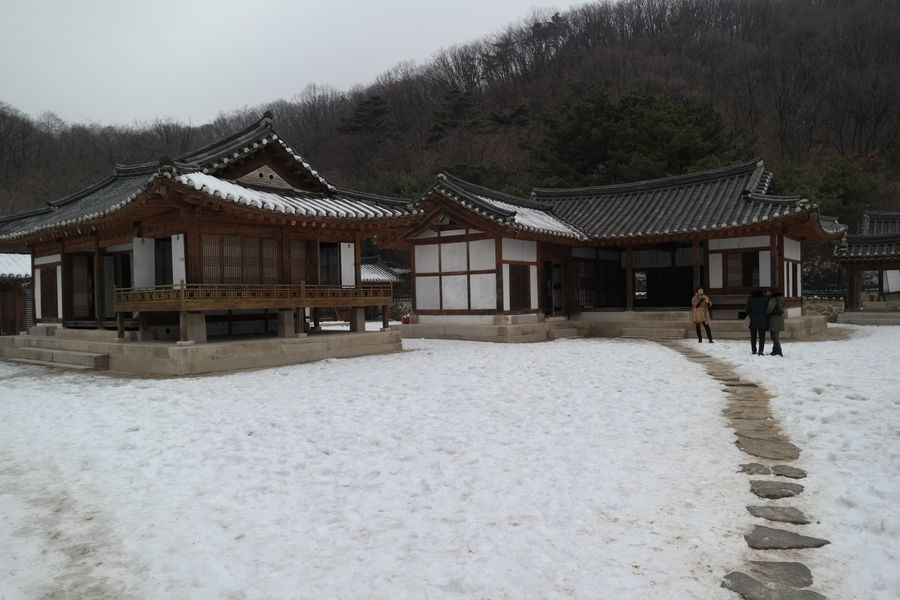
Getting inside further, there are a few buildings with different atmosphere yet small. There are different types, houses with beautiful handrails or houses with pretty guest houses so you’ll see most of the characteristics of Village of Yangban if you see them one by one.
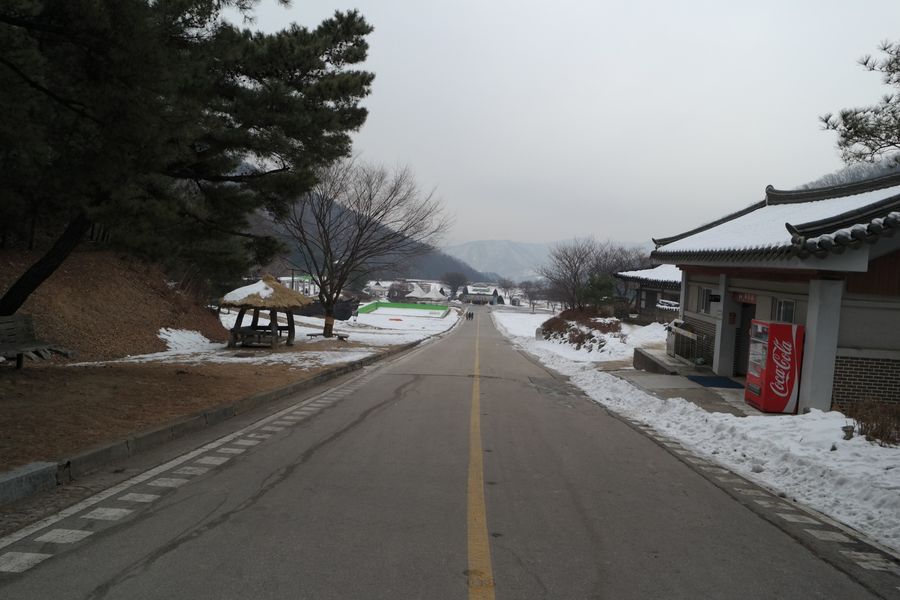
So as we finished taking a look around Undang Studio of houses of powerful people, now it’s time to see downtown where the middle and lowest classes of people used to live. We followed the winding way down again for quite a long time.
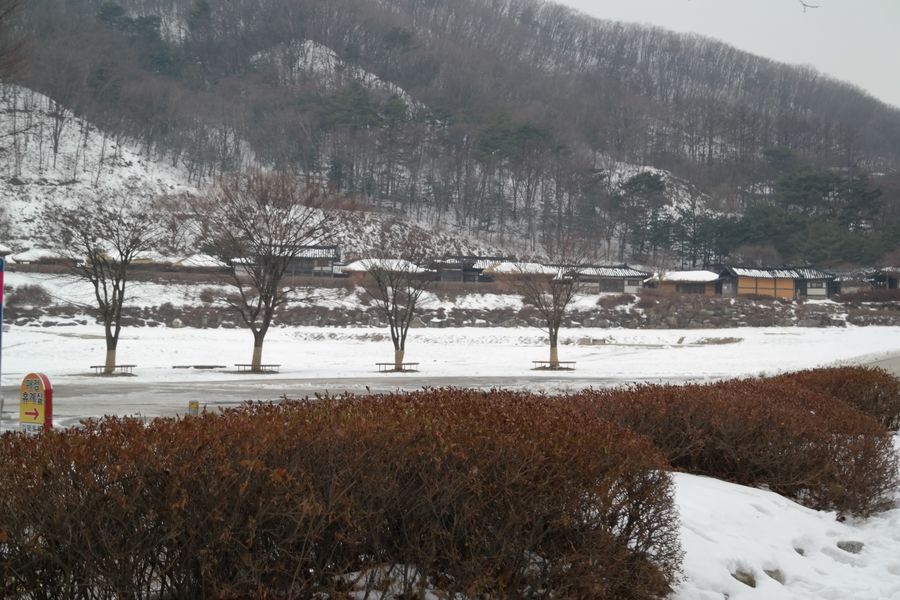
Downtown is the one representing this studio and it prepares a lot of activities and objects for tourists to wear and touch when they don’t shoot the drama or movie.

This Historic Village that is much older than Undang Studio has been on numerous dramas and movies. So when you take a look around the village, you’ll get the scenery that you’re so familiar with.
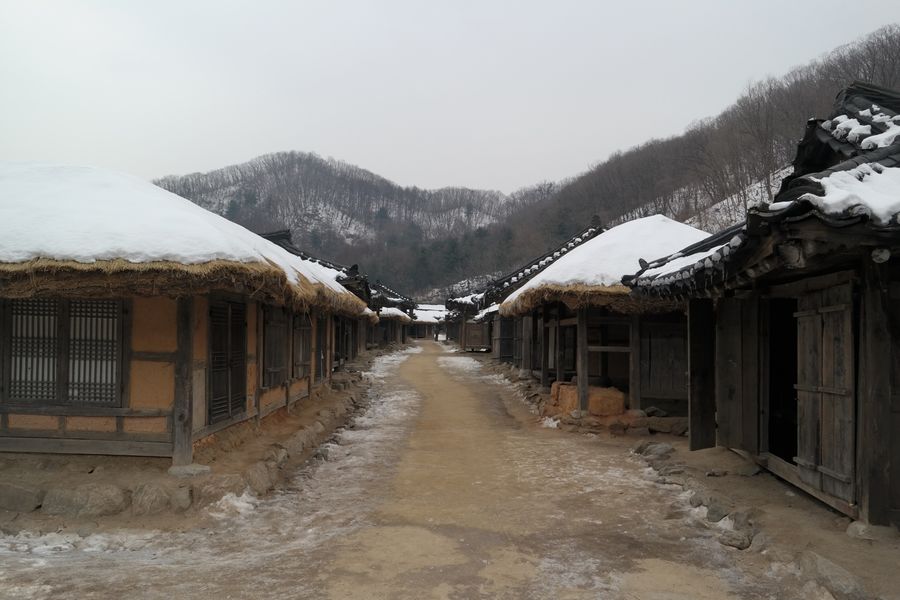
The long path connecting each house in the village is the most famous downtown alley. Haven’t you see this with more people at least once in the drama?
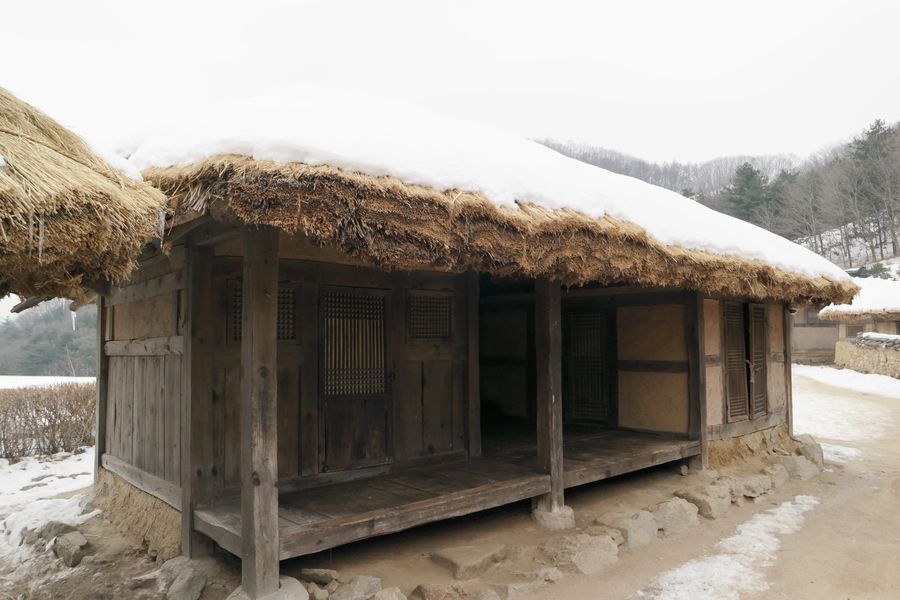
If you walk along the streets, you’ll notice that these houses are very small and the each stylobate is different in shape unlike the houses in Undang Village, Village of Yangban.
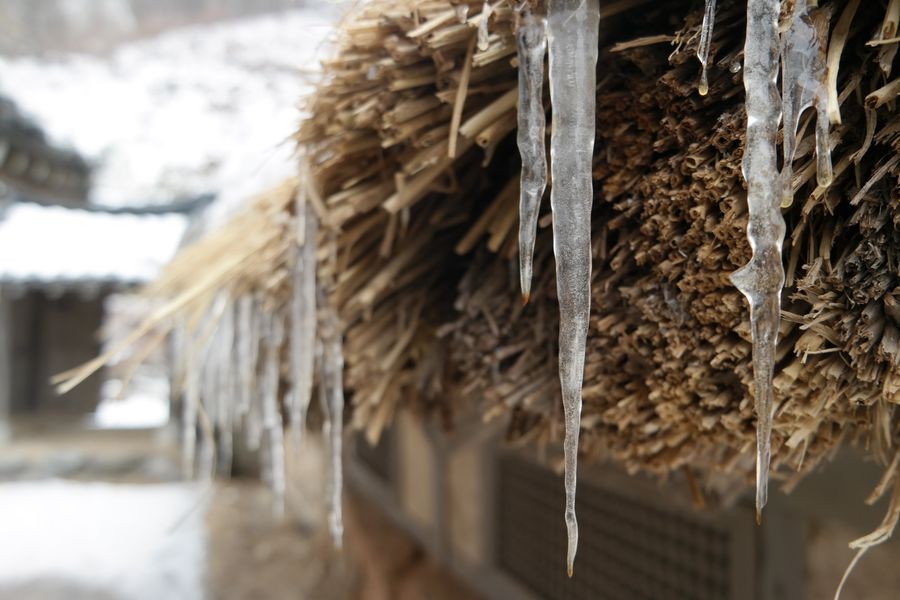
The biggest difference is that the roof is not tile but bundle of straws and the walls are made of woods not white dried mud.
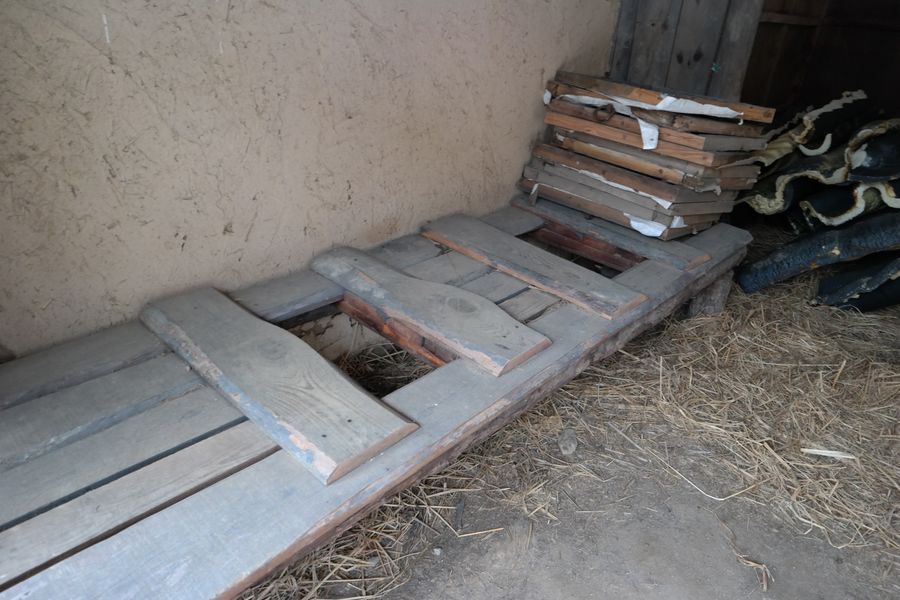
And you could see a toilet that you couldn’t see up there. It’s just a hole on wooden deck and you sit there and poop~!! I don’t know if anyone can do their business being anxious of getting dumped.
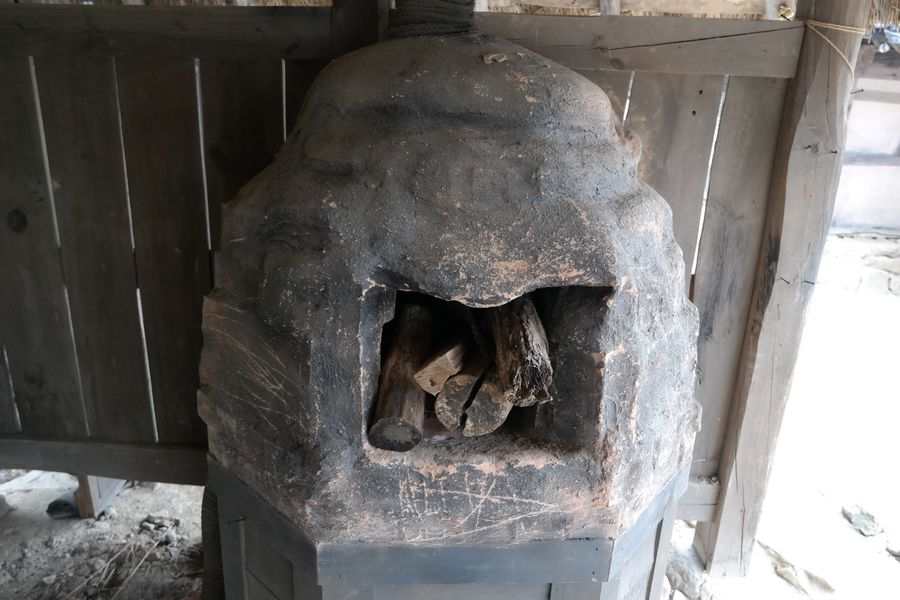
The houses in Undang Studio have divided depending on the class of people who live in them while these are divided depending on the purpose of the building. The houses are categorised by its use such as a silk house, butcher’s shop or blacksmith’s workshop.
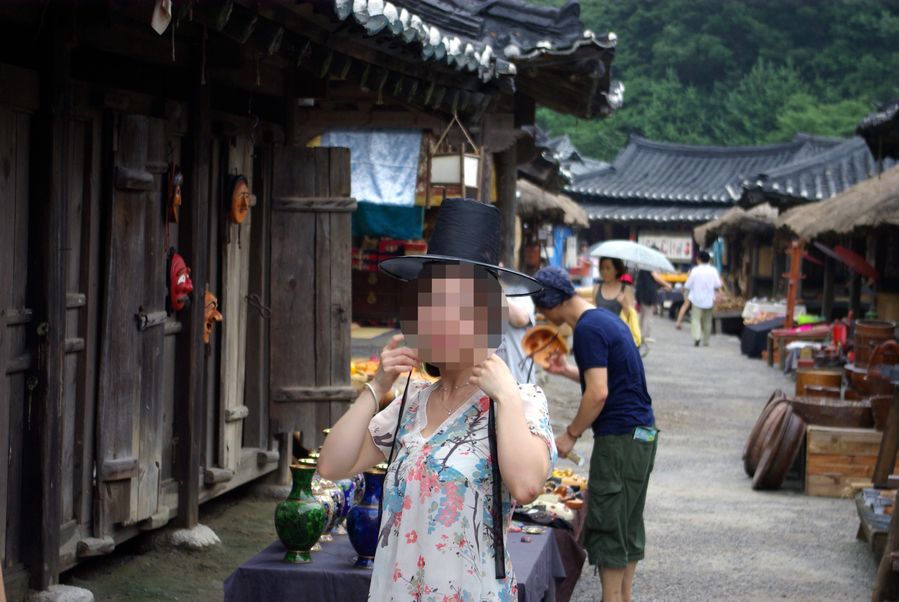
By the way, unlike what I had expected there were no activity studio probably because of cold weather. The picture above was taken when I visited there a while ago. There used to be so many things to do along the street on both sides.

So our tour in the Historic Village has ended. We left the village and moved to a studio that was used for the movie Pirate.
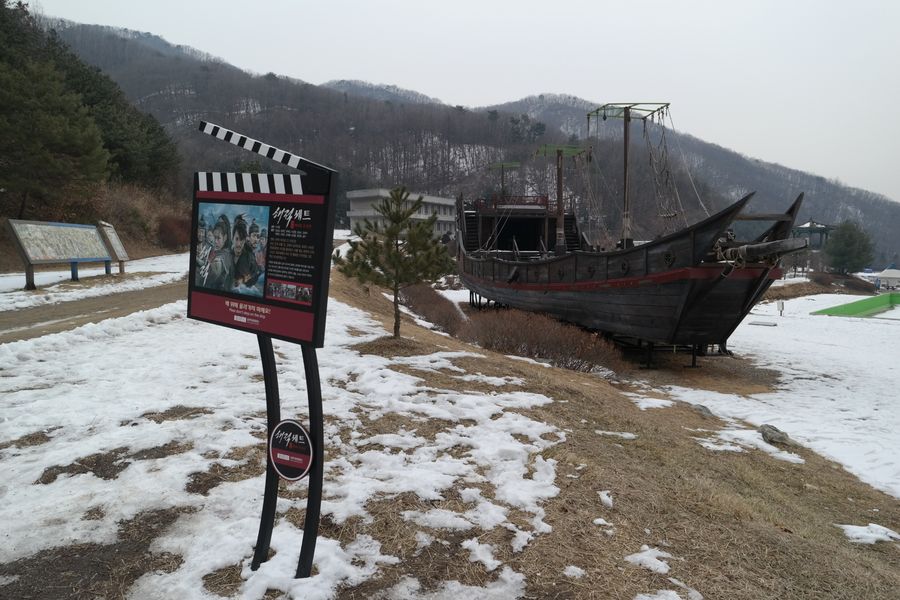
The movie was released not long ago so the studio was popular among tourists. But there was not much to see there. I couldn’t see anything special but only this ship.
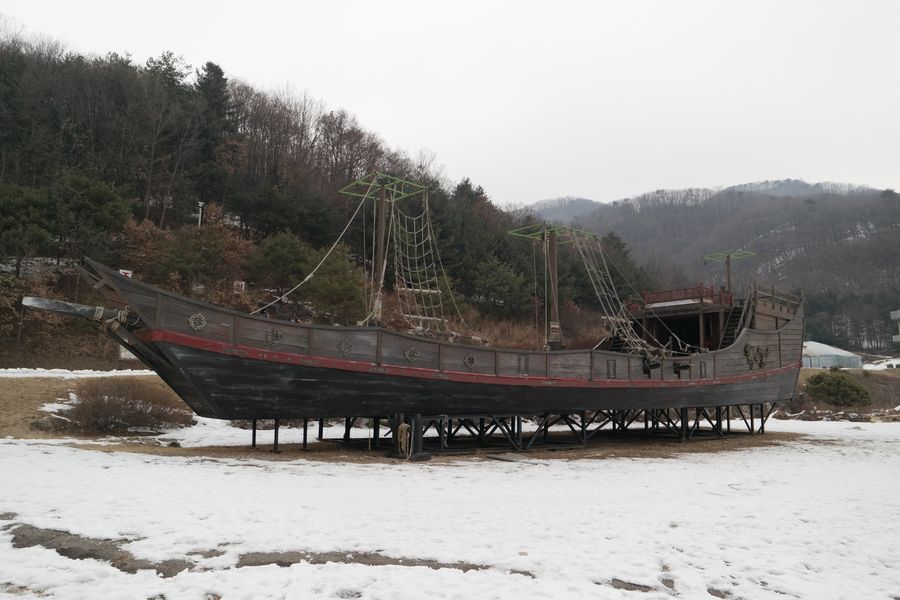
I would rather say this is just a props exhibition than a studio. I think it would have been so much better if they had the ship fixed for people to get inside. What a pity!
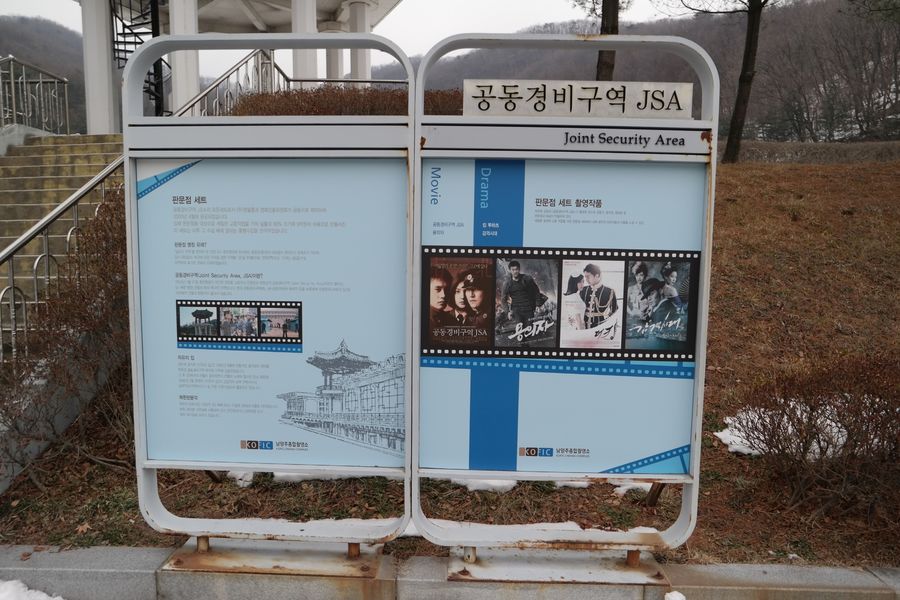
Now, the movie that attracted 2.5 million watchers. Joint Security Area was filmed in this Panmunjeom Studio and it’s also known that it looks exactly the same as the real one.
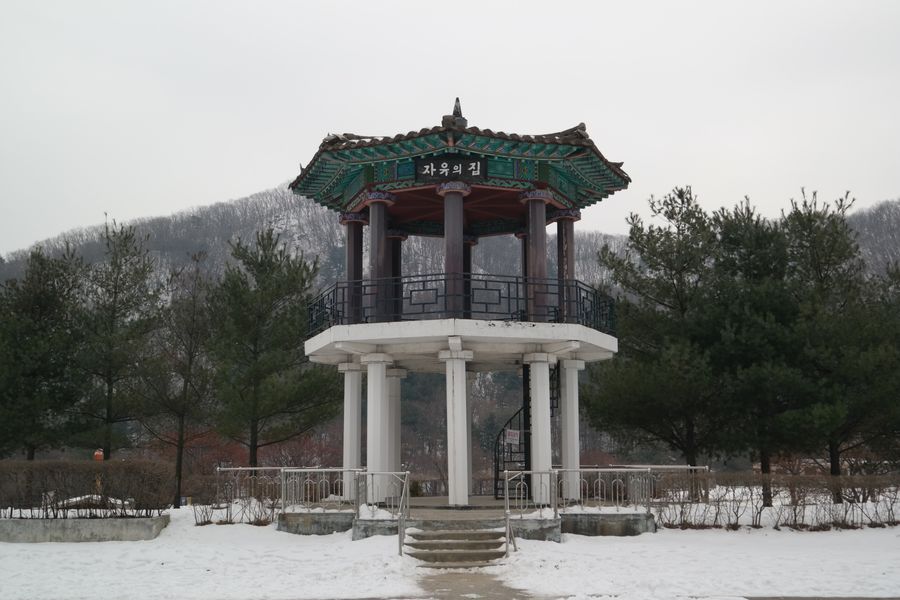
There stood a two-storied octagonal tower ‘House of Freedom’ in the front. Originally, people were allowed to go up to the tower through iron stairs but unfortunately it’s prohibited now, probably because it’s too old.
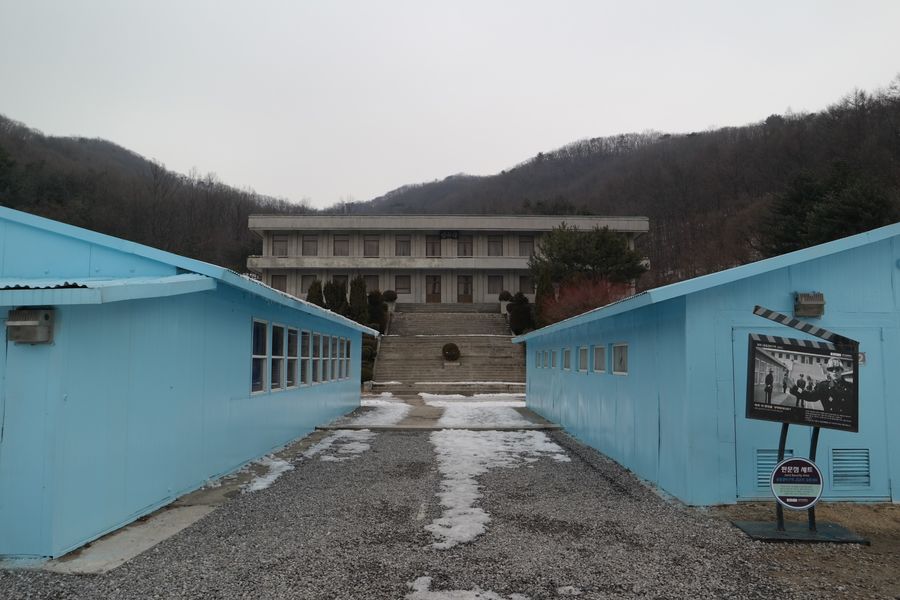
I could see Panmungak far away opposite the House of Freedom. Panmunjeon which is originally located in Paju was used for ceasefire agreement between North/South Korea during the Korean War and the concrete line between blue buildings was the truce line that divides south and north.
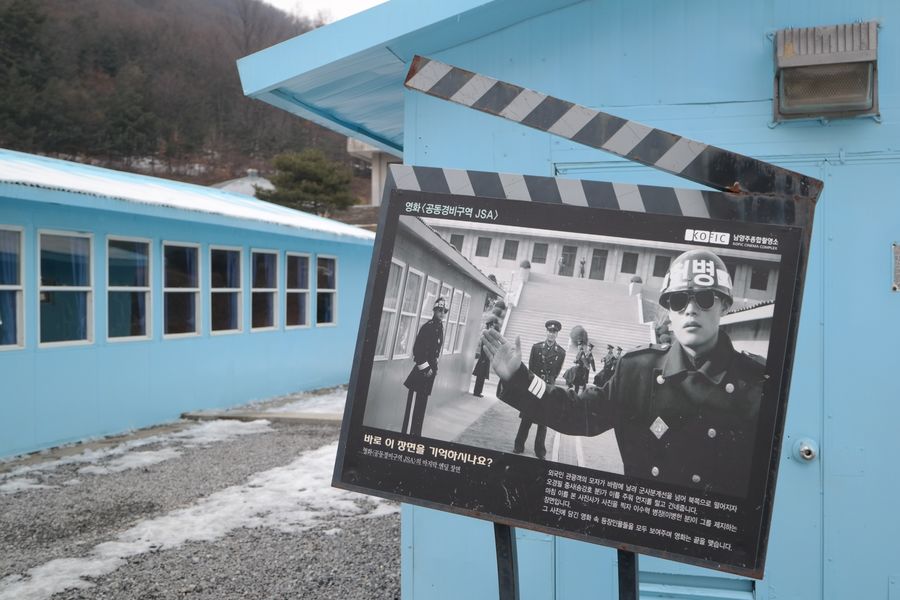
This scene was used on the JSA poster, the movie about the limitations of different ideologies and friendship between South Korean and North Korean soldiers. That was filmed here. There used to be signatures by actors and actresses here along with a photo zone but they’ve been cleared.
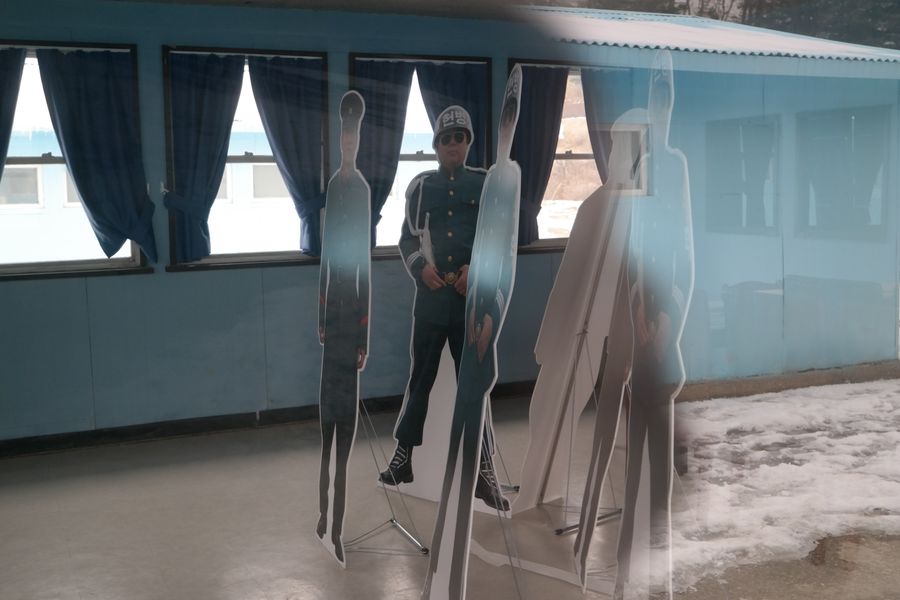
The signs of Song Gang-ho and Lee Byeong-heon were inside the blue building. ‘Wow…this is cheap. Why don’t they just get them out for visitors?’

If you cross the truce line and get upstairs, you’ll see Panmungak, the northern building in Panmunjeom. This is just a studio but it makes me feel like I’m in North Korea, which is weird.
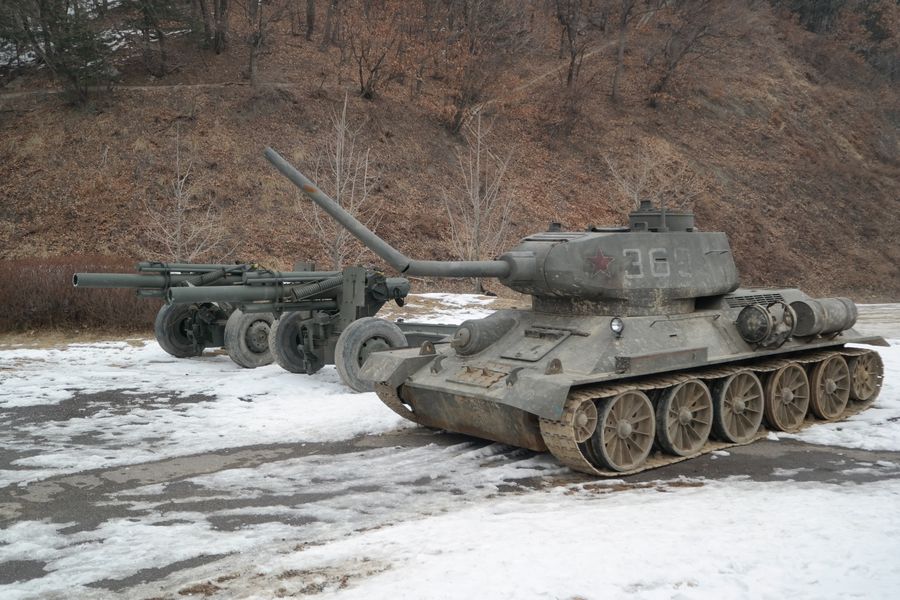
There are tanks and fieldguns displayed in small empty lot in the studio. The cannon seemed broken so I assumed it would be a fake but it was real iron. Is this real?
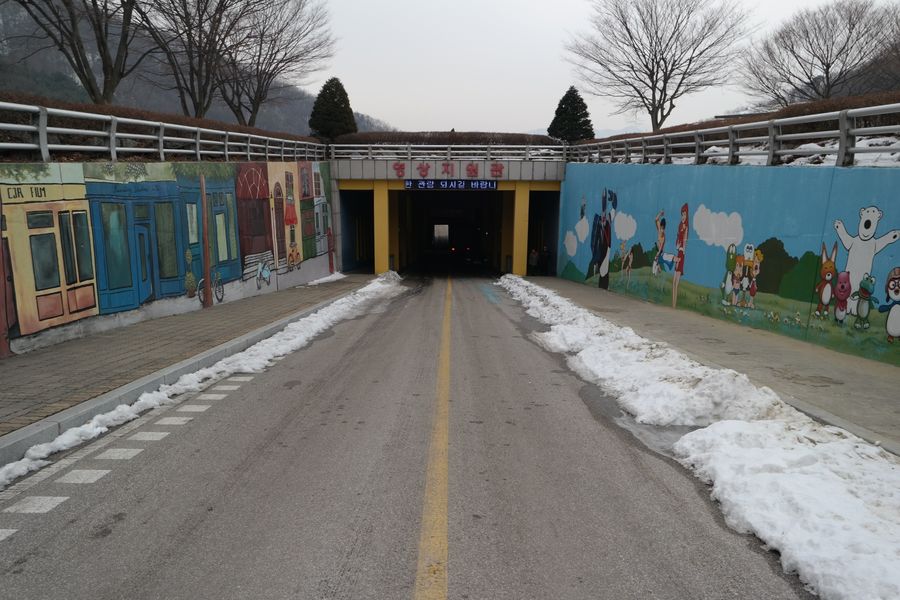
Now that we finished touring outside, it’s time to look inside. This Namyangju Studio Complex has a big outdoor studio but it also offers plenty of things on videos inside the building that seemingly is buried under the ground.
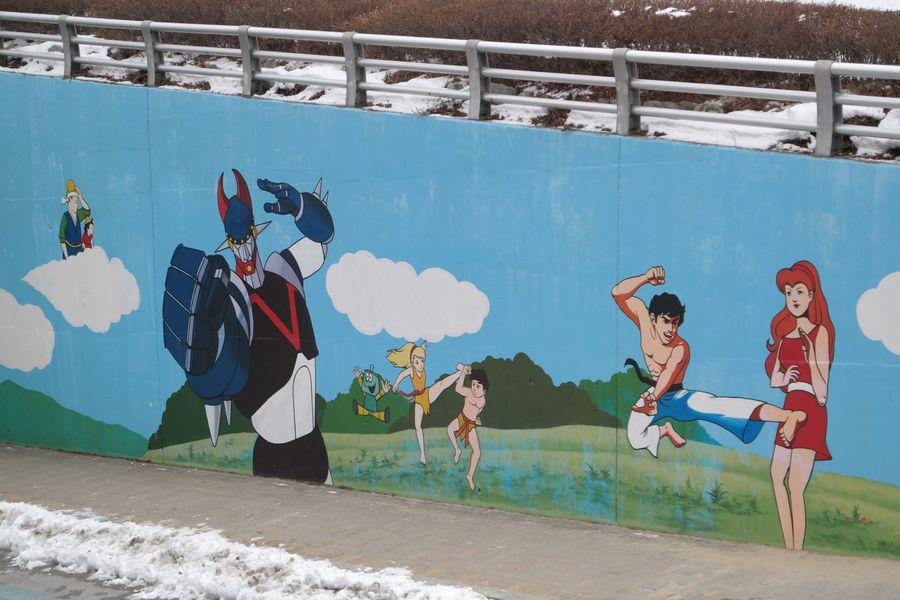
Videos are supported in this building so that the building has a tunnel in the middle for cars to get inside directly. On the walls of the tunnel, there are cartoon characters from Taekwon V to Pororo showing the history of Korean animation that reminded us of cartoons in history.

This Image Support Centre is two-storied building where the first floor is used to support making images including props room and dress room and the second floor is prepared with activities. We went behind the building so we had to look around the second floor first.
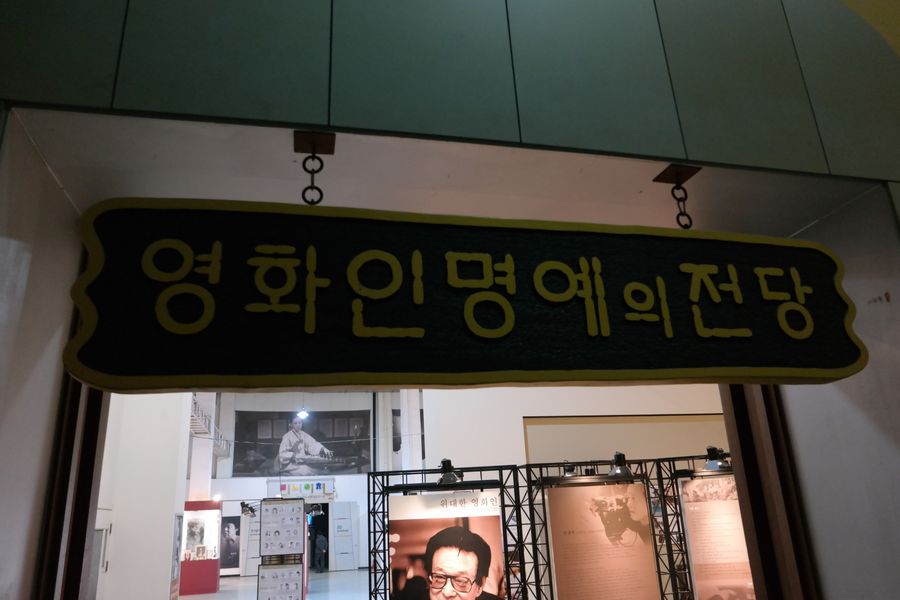
It’s second floor yet the lightings were in there which made the place look like dark underground. The first thing we saw was the Hall of Fame for Moviemen.
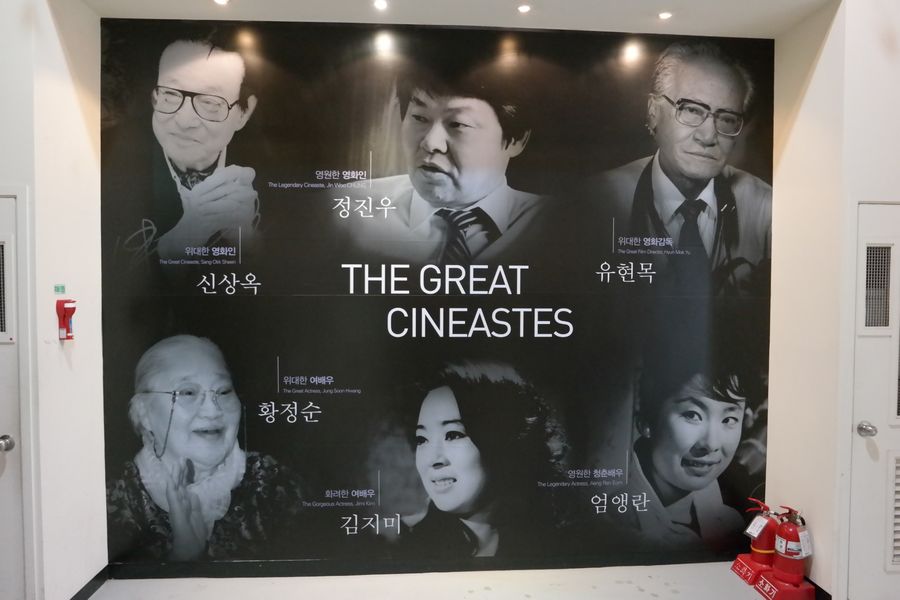
As a hall of fame for moviemen chosen by moviemen, it introduces people who contributed to Korean movie industry including the actors, actresses and directors. Currently 6 people are registered, Sin Sang-ok, Hwang Jeong-sun, Gim Ji-mi, Eom Aeng-ran, Jeong Jin-wu and Yu Hyeon-mok, those you must have noticed by their names.
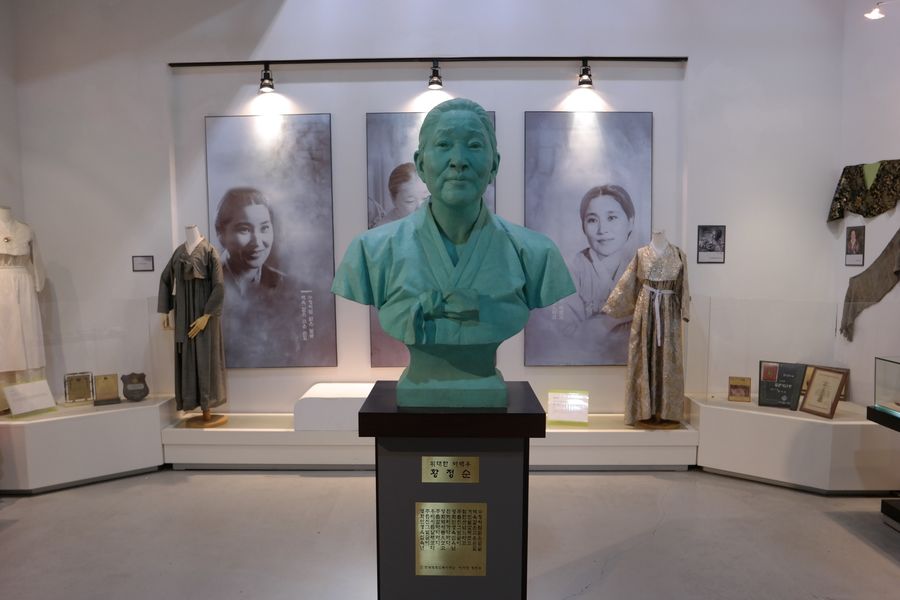
Being inducted into this itself is an honour and attracts eyes so this is quite an authoritative hall. When you get inside, there are booths with big bust sculptures and different items displayed.
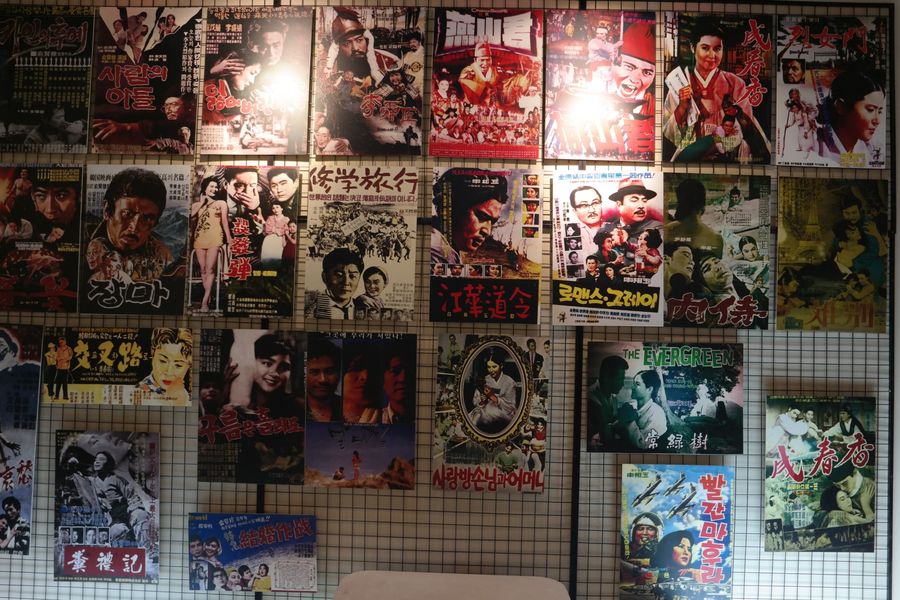
For actors, the posters of the movies they’re in were displayed and for directors, the posters of the movies they’ve made were displayed on the wall. It was quite provocative to see them now but they must’ve ruled the era I bet.
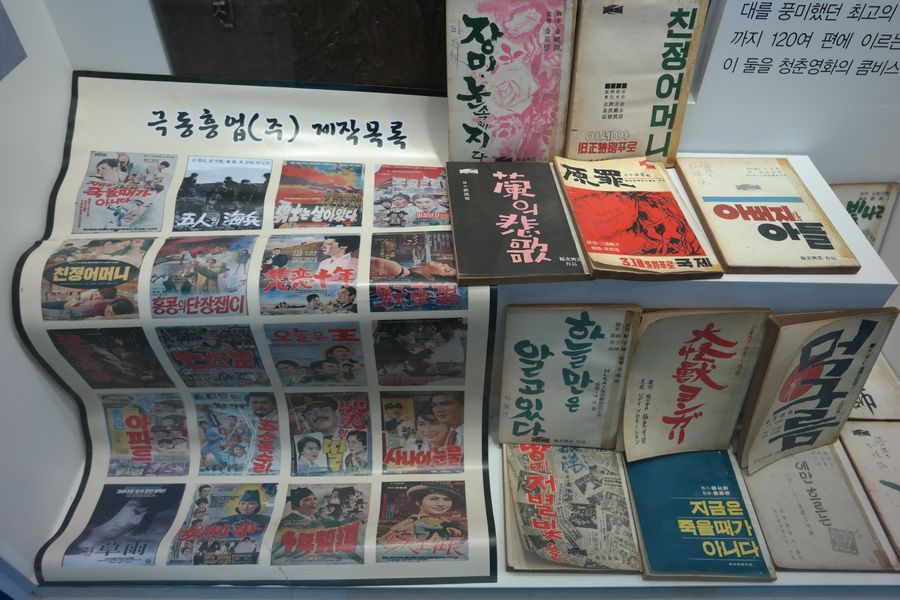
I happened to wonder why they liked red so much. Well, to think of my childhood, I still remember posters with letterd painted in red, not pictures as now, in old times.
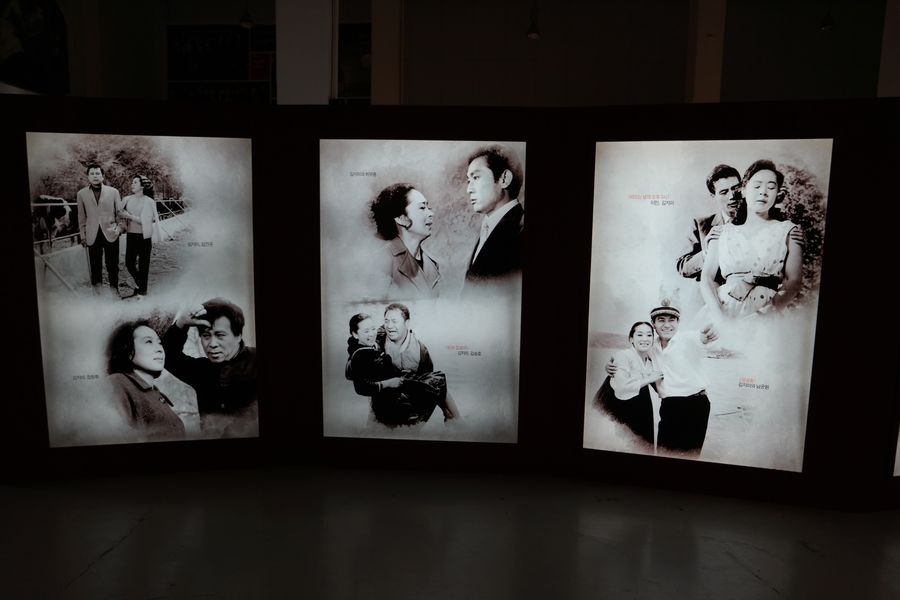
In one corner, there are movie scenes in which they played parts framed in albums. We’ve heard of their names but this must be the first time to see them in movies. The moviemen here are from black/white movie era so people today wouldn’t have much information on them.

But to see their poor filming environment they went through or items, we’ll be able to see more of actors or moviemen in good environment so that we’ll be able to see the traces of the people we’re more familiar with here.
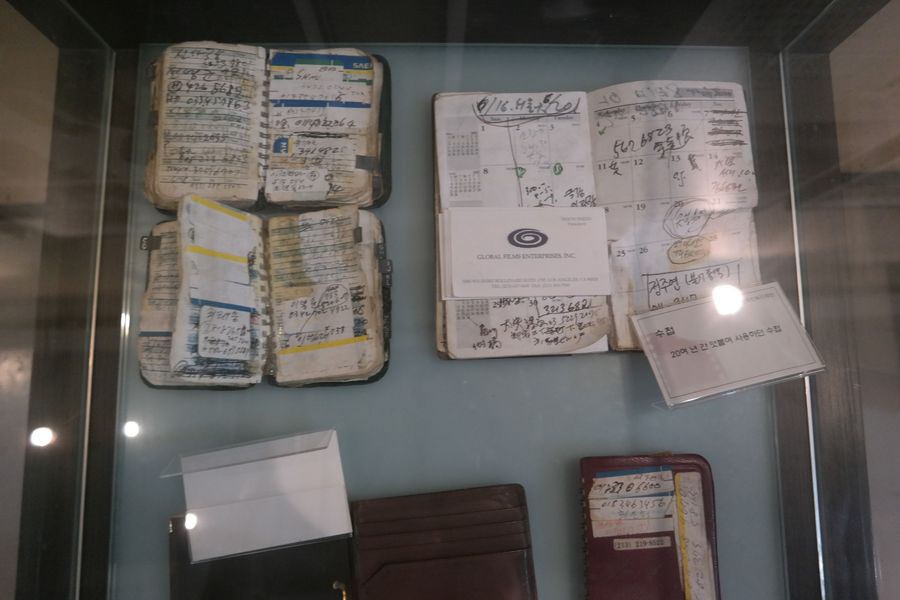
Notebooks full of notes for decades, wallets, cigarettes and chairs used in filming site, old lighters and items were displayed so that two hours would fly in this building.
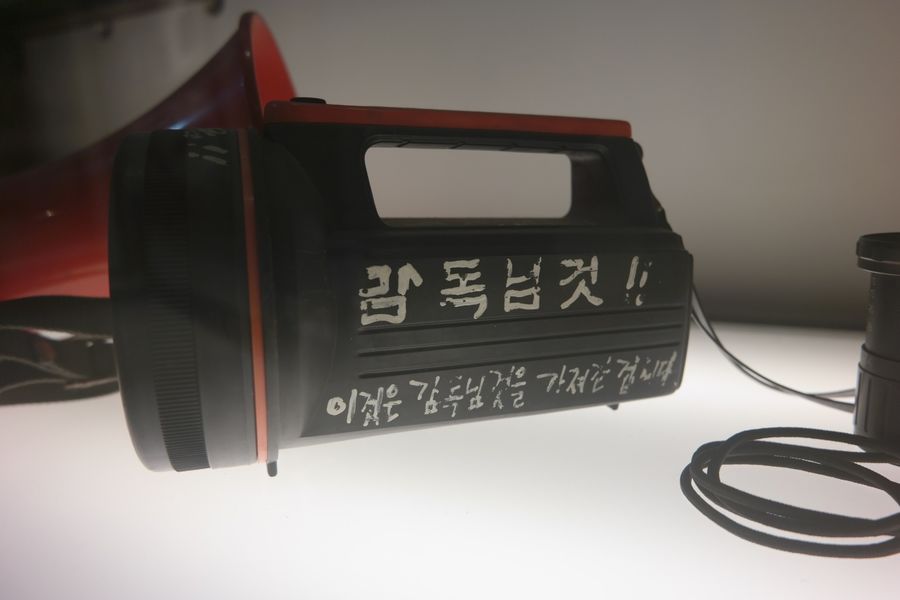
And the traces of their interesting real lives. Yeah, you shouldn’t steal the director’s lantern~ lol They’re not actually old, they’re barely a few decades old, but a few letters made us share our feelings for old things and new things now.
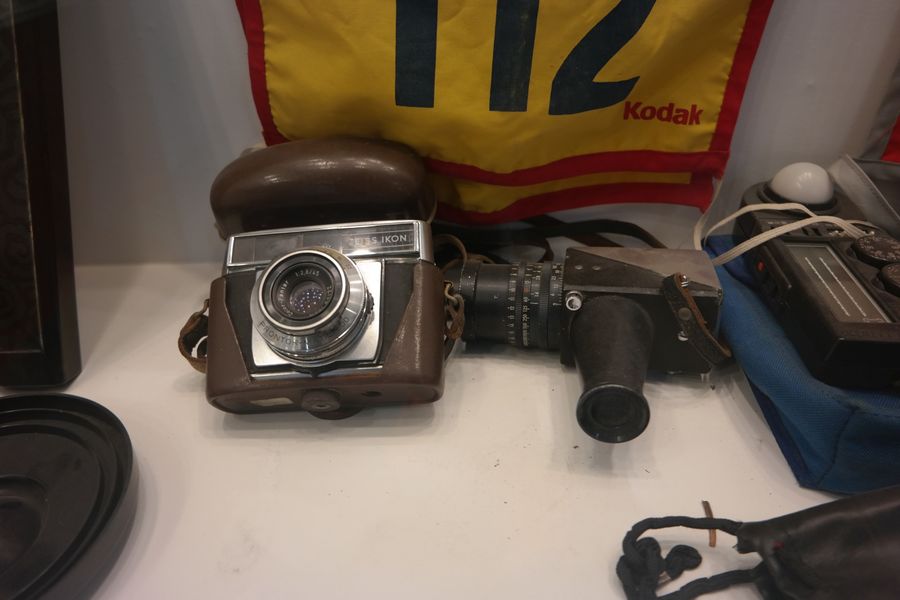
In one corner, there are very old dust-ridden cameras. I wanted to take a closer look at the camcorder with the handle but it was almost dumped in the corner so it was kinda sad. Every little thing is a heritage in the movie industry.
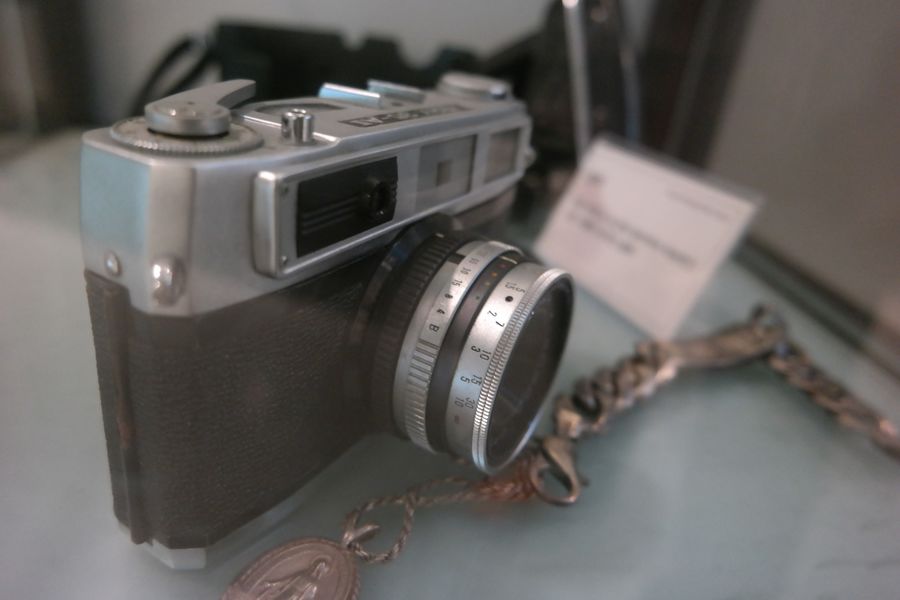
A film camera that I had to roll the film whenever we had to take a picture. Today, the digital camera has been generalised using various digitalized cameras so we’re able to take a few dozens of pictures for one scene but in old times it must’ve been hard to get one shot. Even worse, it would’ve been almost impossible to own a camera since it was so expensive.

The filming equipments and projectors in old times were displayed in one booth. Of course, you could check out the history in detail where the movie development process is displayed in center so you should just pass by this place.
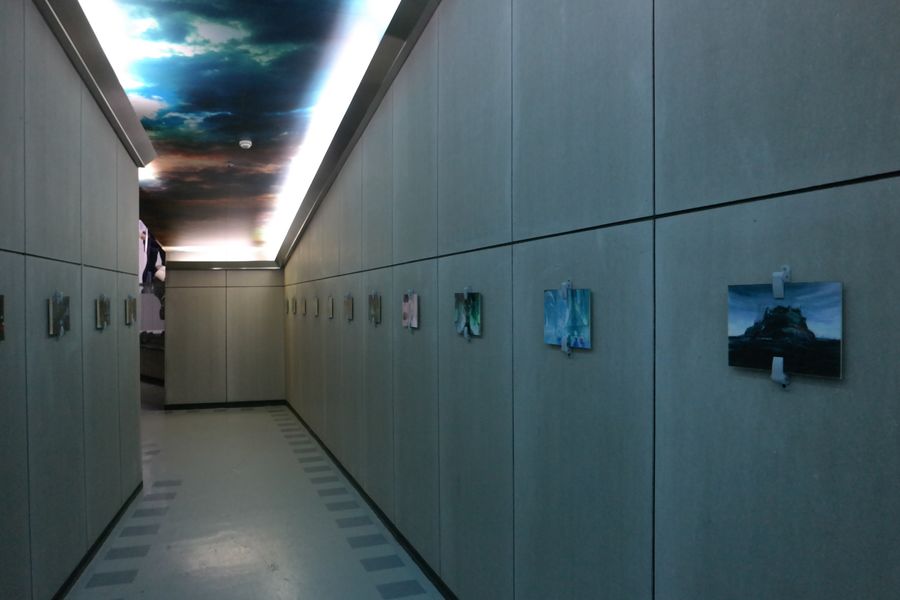
At the end of the hall, we saw mysterious-colored lights coming from the exit. This leads to Miniature Studio.
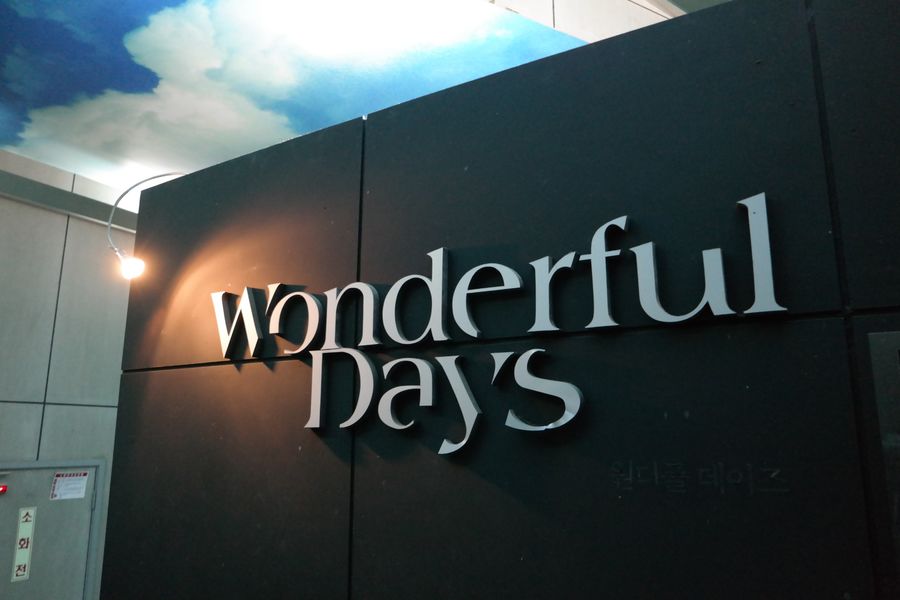
Miniature Studio is a small studio that has small and delicate props used in Korean animation Wonderful Days in the early 2000s.
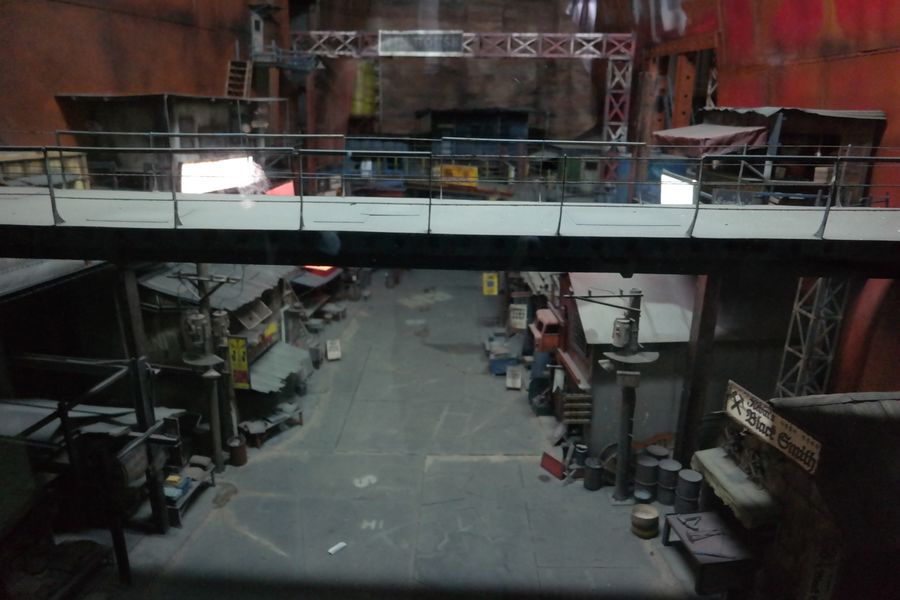
It was the first movie in Korea that 2D+3D+Miniature combined with 12 billion won invested throughout 7 years and unfortunately it did not attract many viewers but it’s known that it reaffirmed our technology in animation industry.
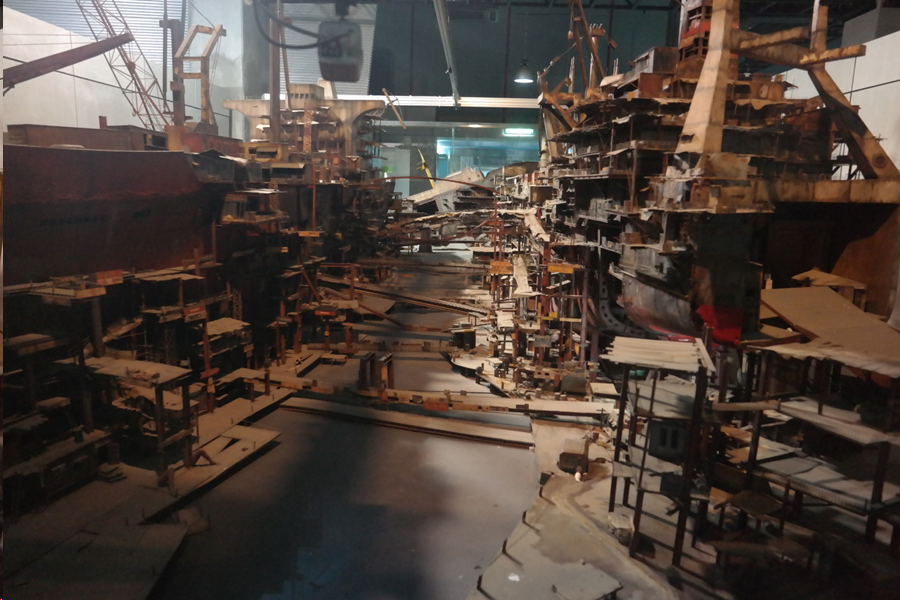
If you first set eyes on them, they look like toys but if you take a closer look at them they’re so delicately made such that you couldn’t make those small holes on iron stairs from handrails even with tweezers.
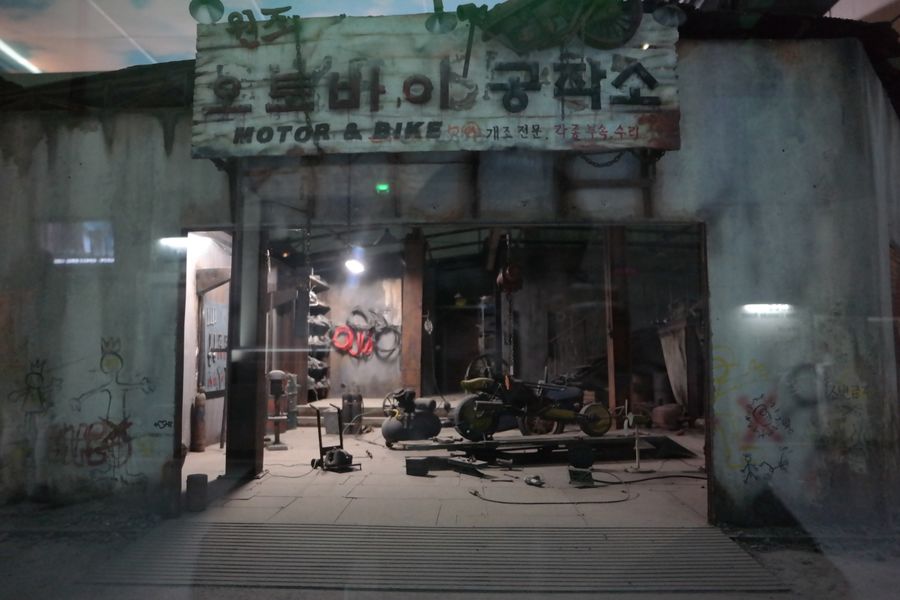
So they shoot the film here in this delicate miniature studio, 2D paintings and 3D movies are composed together to make it a real-like animation.
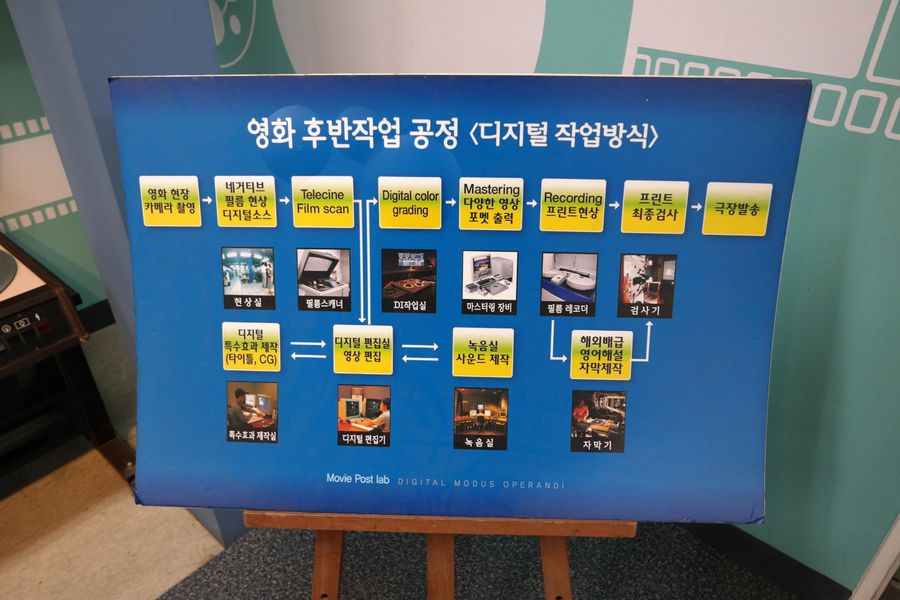
Other than that, in order to make it a movie, there should be so many and complicated processes including dubbing and BGM. If you think about it, it’s an art piece as well as a product of enormous efforts of people.
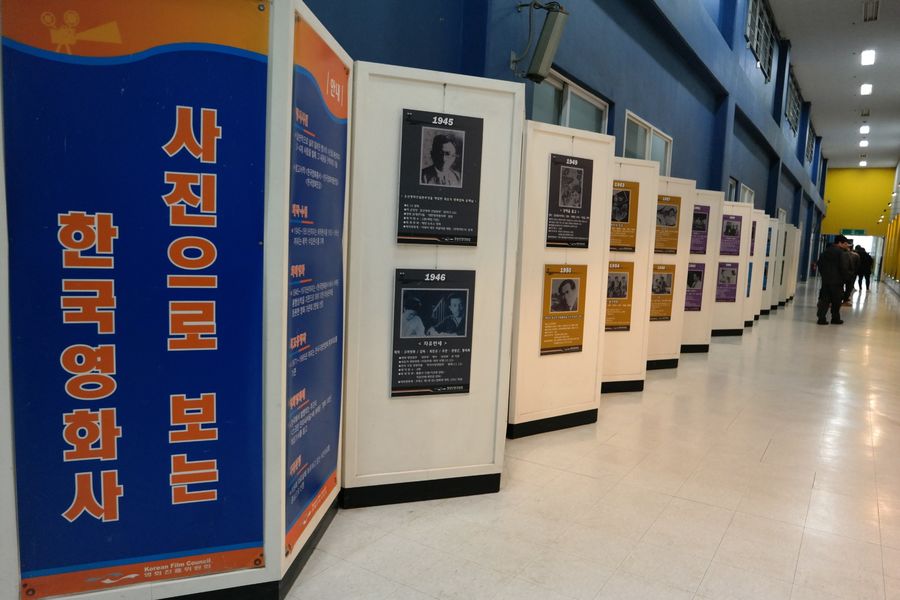
And there are so many of them. From the low-budget movies to complicated animations, there have been so many movies of stories in different types that made Korean movie industry as it is now.
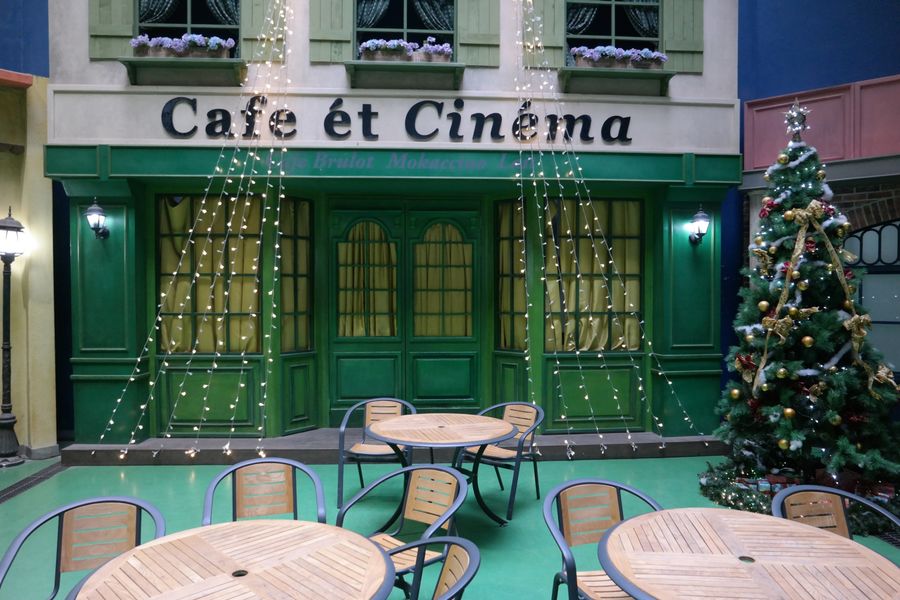
At the end of the hall, there’s a resting place decorated as a studio. It seems like they could start filming now. In front of this area, there’s a small convenient store for us to buy beverages.
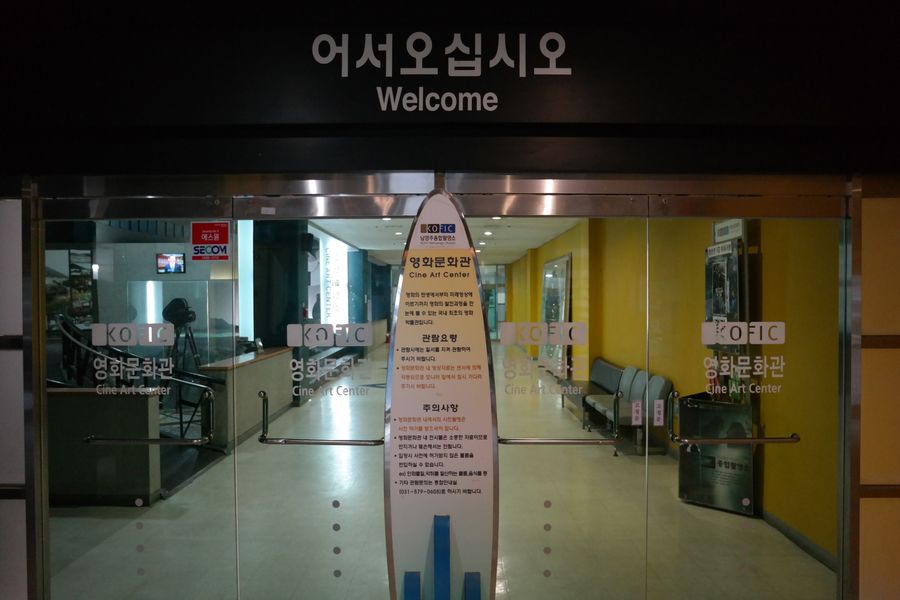
After a short break, we went down to the first floor. It’s time to go to Image Cultural Hall. This place allows us to read detailed explanations about Korean movie
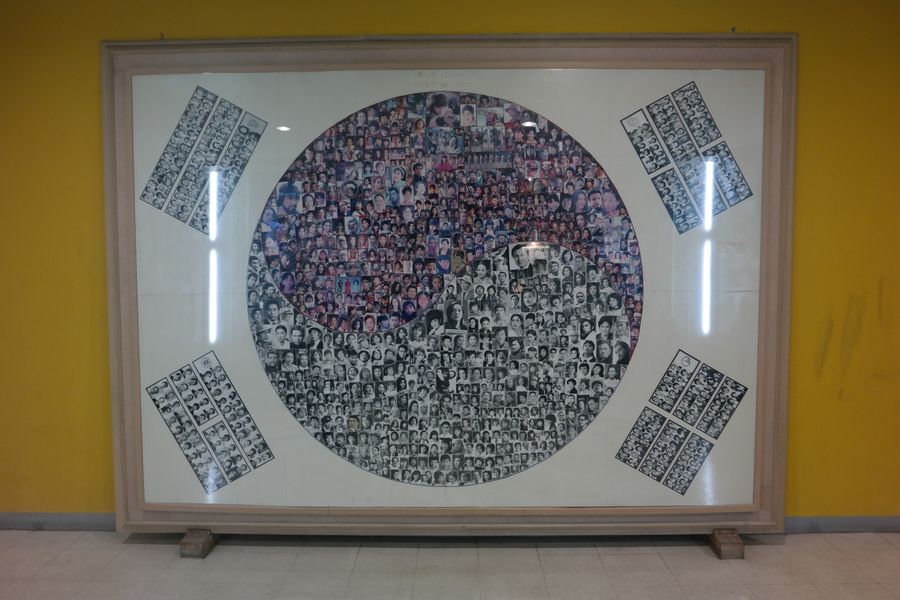
As we got in, there’s a Taegeukgi made of small photos of people who have contributed to Korean movie industry. Of course there are many more people than this but it was kinda long list already.
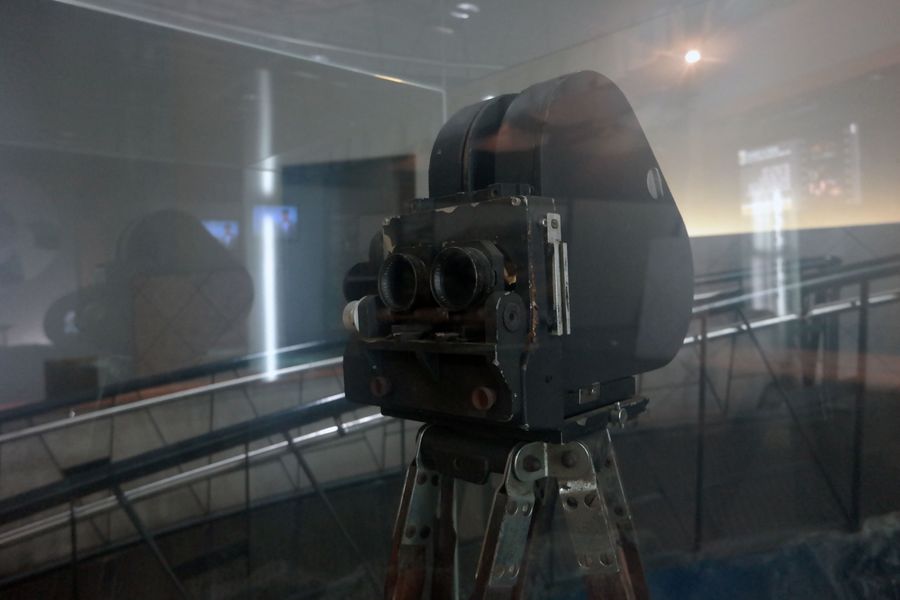
And I could see a strange camera at the entrance to the opposite side. There’s only one of this so is there anything special about it?
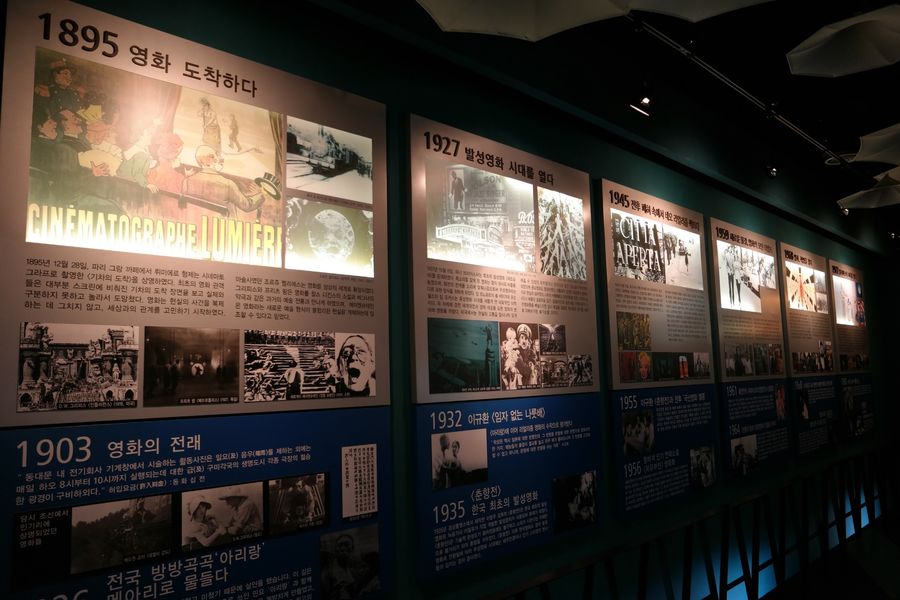
Exactly! This is the first 3D filming equipment in Korea that shot directed by Lee Gyu-ung in Donga Movie Theater on February 8, 1968. You might be surprised to know that Korean movie has a long history than you expected. Now get in further, and you’ll see more details on the history of Korean movie.
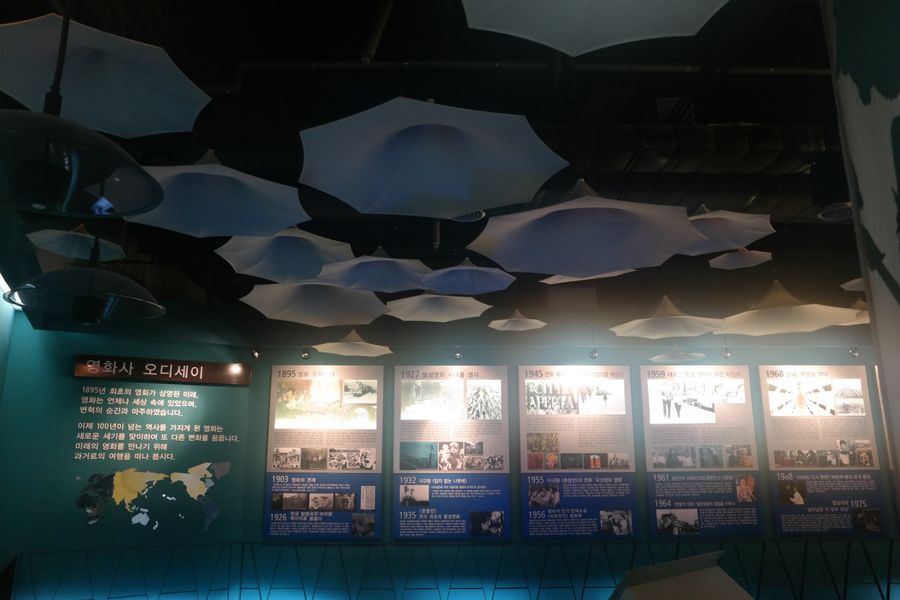
And the props on the ceiling were attractive as well. White tent that looks like a wizard’s hat or an umbrella spreading out like it’s falling from the sky was somehow dreamlike.
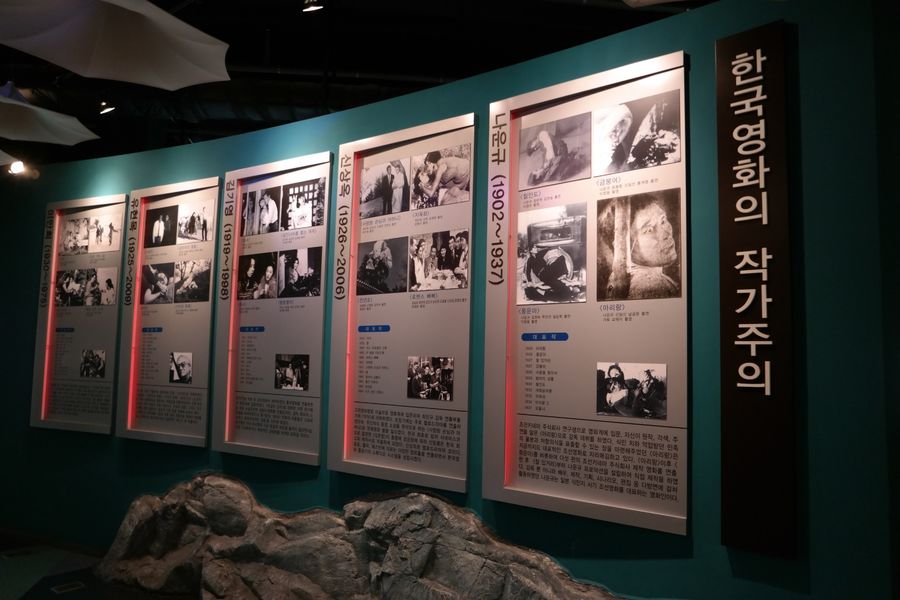
You might find it boring but they were explaining artistic symbols and representations by categorising them depending on the age, writer and genre while you listen to gentle music for a relaxing look around.

It’s not just about artistic evaluations. A small monitor shows the highlights of the greatest movies among a few hundreds made in Korea that reminded us of old times.
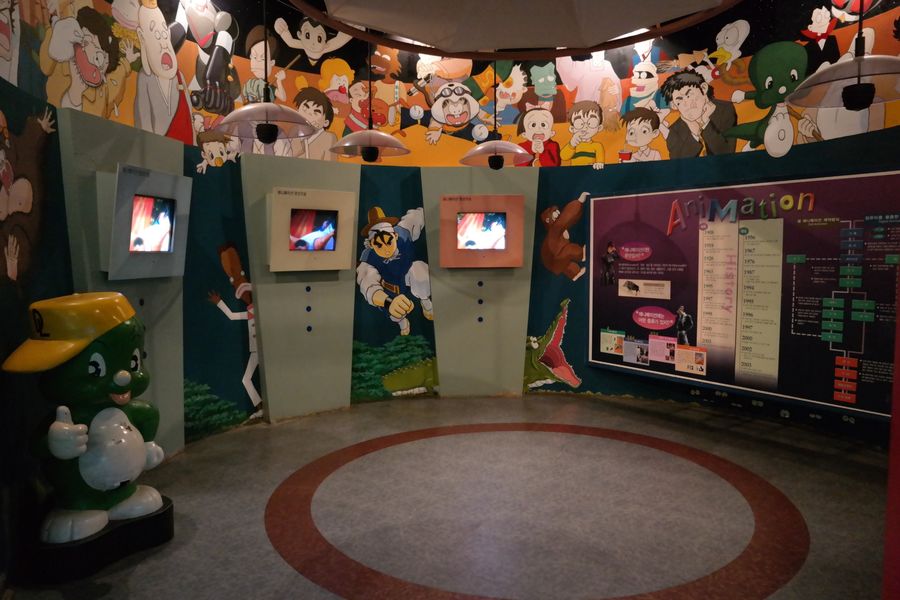
And there’s an animation booth for kids. As the main characters of animations reminded me of myself watching cartoons as a kid like ‘Dooley’, ‘Yeong Sim-yi’ and ‘Super Board.’
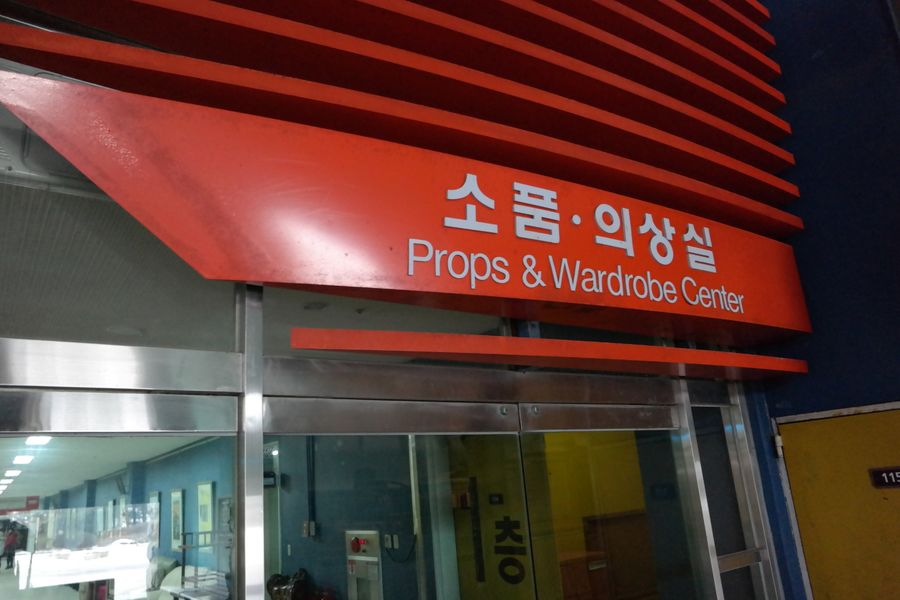
If you finished watching Movie Culture Room you’re almost done. There are props and dressing rooms on the first floor but they are really for movies, not for viewers.
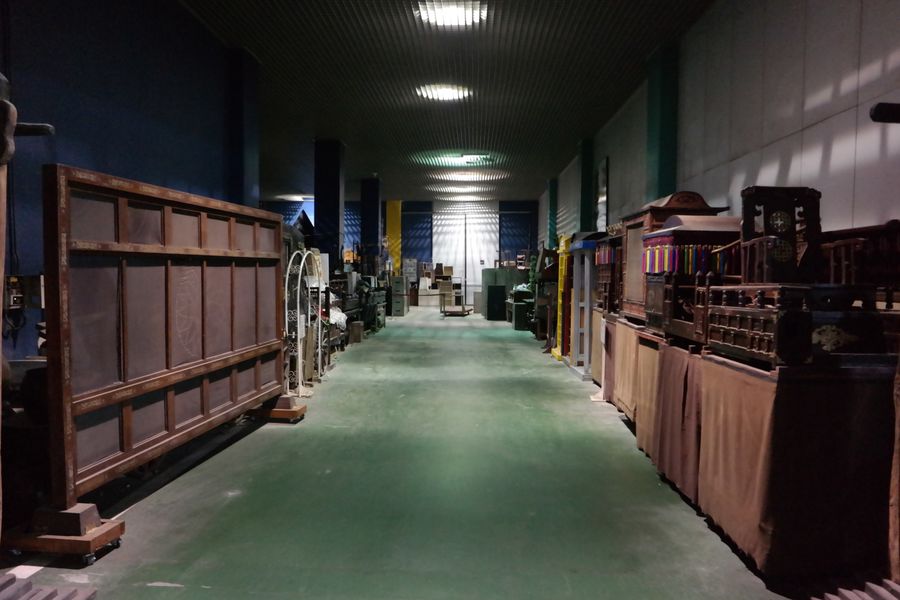
Is it because the bier attracted my eyes first? This place full of old items was kinda bleak. And there was no one around here…
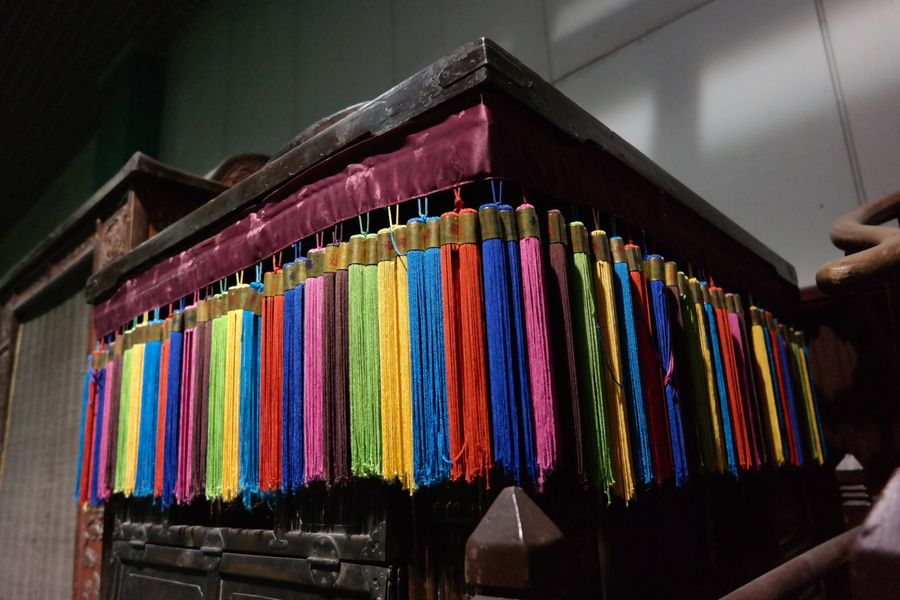
This is a palanquin that my grandmother’s grandmother would’ve used. Assuming from fancy decorations, this must be used in weddings in historical dramas.

The entrance was full of big items. Of course they’re not displayed for the audience but I was dying to know what it’s for because there’s no explanation or signboard.
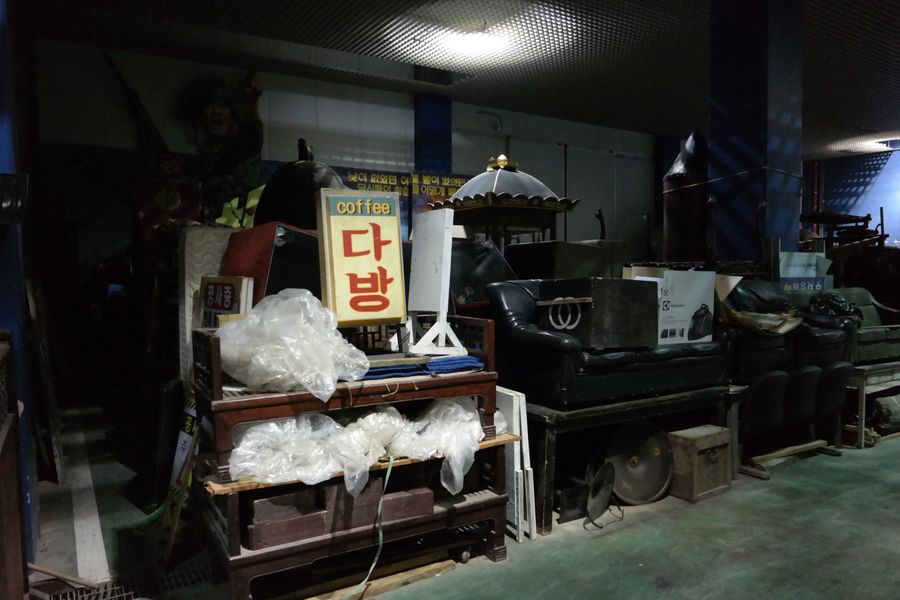
The entrance was full of big items. Of course they’re not displayed for the audience but I was dying to know what it’s for because there’s no explanation or signboard.
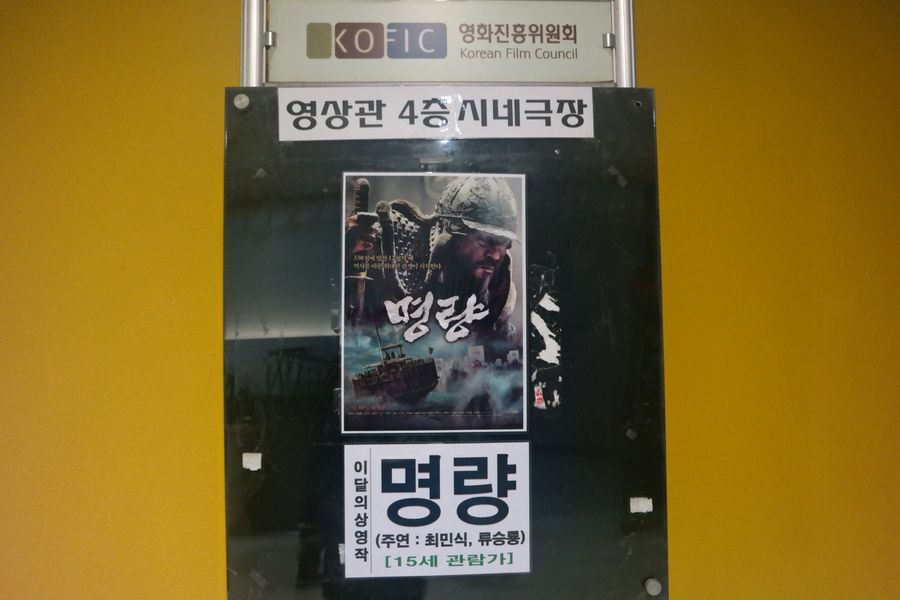
Ah…I guess Namyangju Studio Complex shows a movie every month. However, it’s on in the building below the parking lot so if you came here by public transportation, it might cause you a bit of trouble.
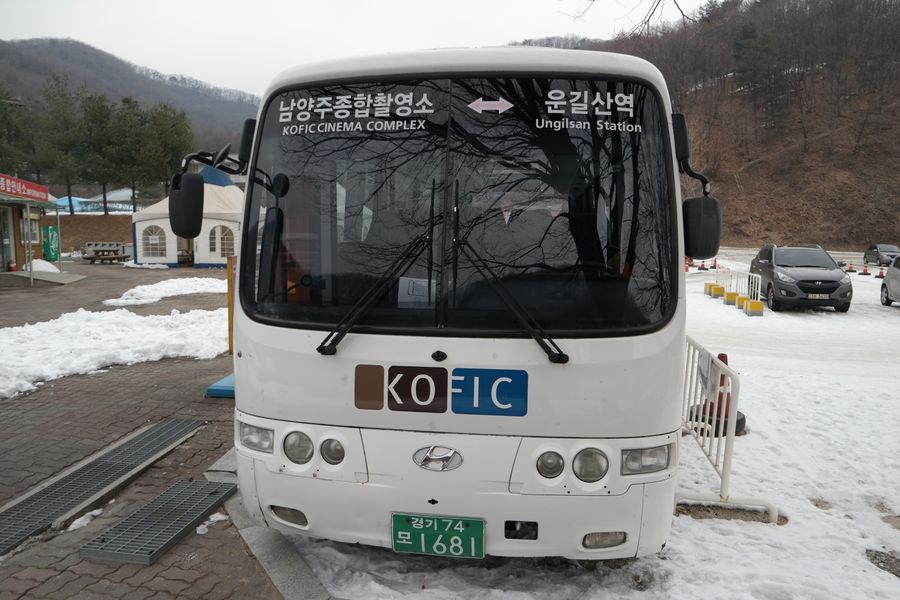
By the way, we had a comfortable tour and enjoyed details about movies in Namyangju Studio Complex. Now it’s time for us to leave here. To think about it, we could enjoy the studios and indoor exhibitions and the most attractive part of this place is that we could pretend to be the main characters from the movies we’ve watched and take pictures, not to mention it’s the biggest one in Asia. So I think it would be nice to bring your kids here at least for one day to take a look around. On a warm day in spring, why don’t you take your family to Namyangju Studio Complex and spend memorable time together?
Map : link
Address : 100, Sambong-ri, Joan-myeon, Namyangju-si, Gyeonggi-do
Telephone : 031-579-0605
Operating Hours : 10:00~18:00 (November~February : by 17:00)
Admission Fees : Adult: 3,000 won / Middle, high schooler: 2,500 won
Website : website









